Deep Dark Secrets From A Mortician
By Juliet Smith
2 years ago
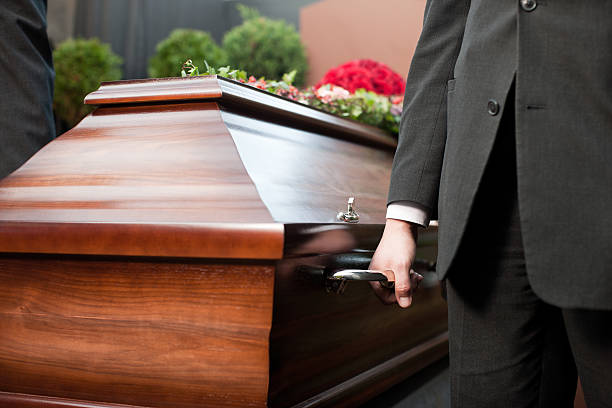 When someone dies, the body has to be transferred to the morticians. For example if the person was at hospital or a nursing home then body is driven to an morticians. But if the circumstances are not as clear then first the body has to be taken to the coroners before entering the morticians to discern how they died.
When someone dies, the body has to be transferred to the morticians. For example if the person was at hospital or a nursing home then body is driven to an morticians. But if the circumstances are not as clear then first the body has to be taken to the coroners before entering the morticians to discern how they died.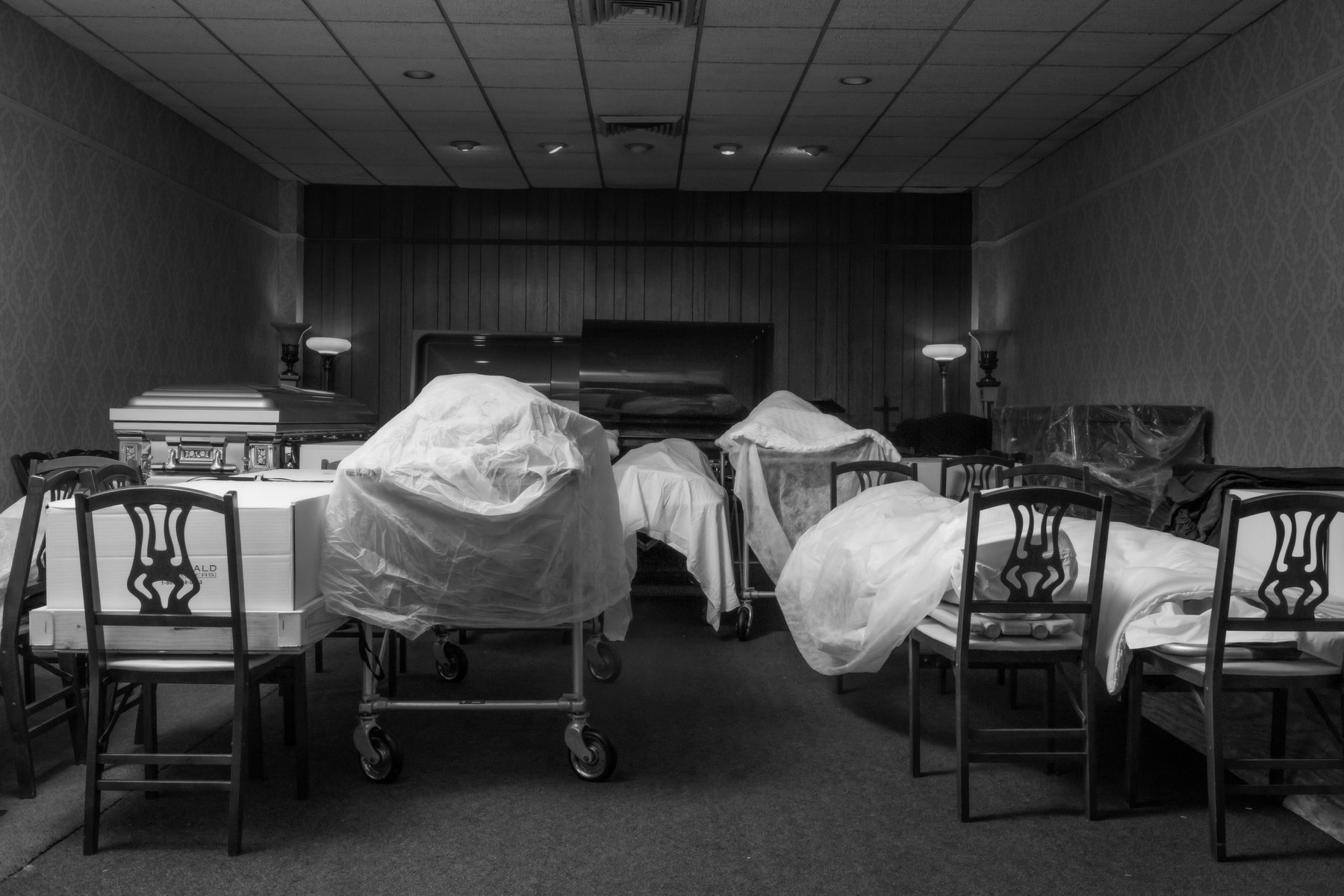 One of the first steps after retrieving the body is to check it for anything in particular. This could be anything from a pace maker to whether the body has a disease, or whether any fluids are coming from the body. This is because depending on the body, it will have to be treated in a different way.
One of the first steps after retrieving the body is to check it for anything in particular. This could be anything from a pace maker to whether the body has a disease, or whether any fluids are coming from the body. This is because depending on the body, it will have to be treated in a different way.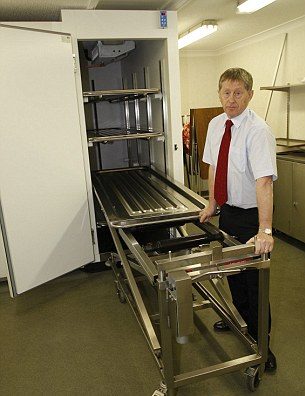 After assessing the body, it is then loaded onto a mortuary tray which can be metal or plastic, with wheels so that it can be easily transferred into the fridge. Then, the body is placed straight into the fridge as soon as possible so that it stops it from decomposing quickly.
After assessing the body, it is then loaded onto a mortuary tray which can be metal or plastic, with wheels so that it can be easily transferred into the fridge. Then, the body is placed straight into the fridge as soon as possible so that it stops it from decomposing quickly.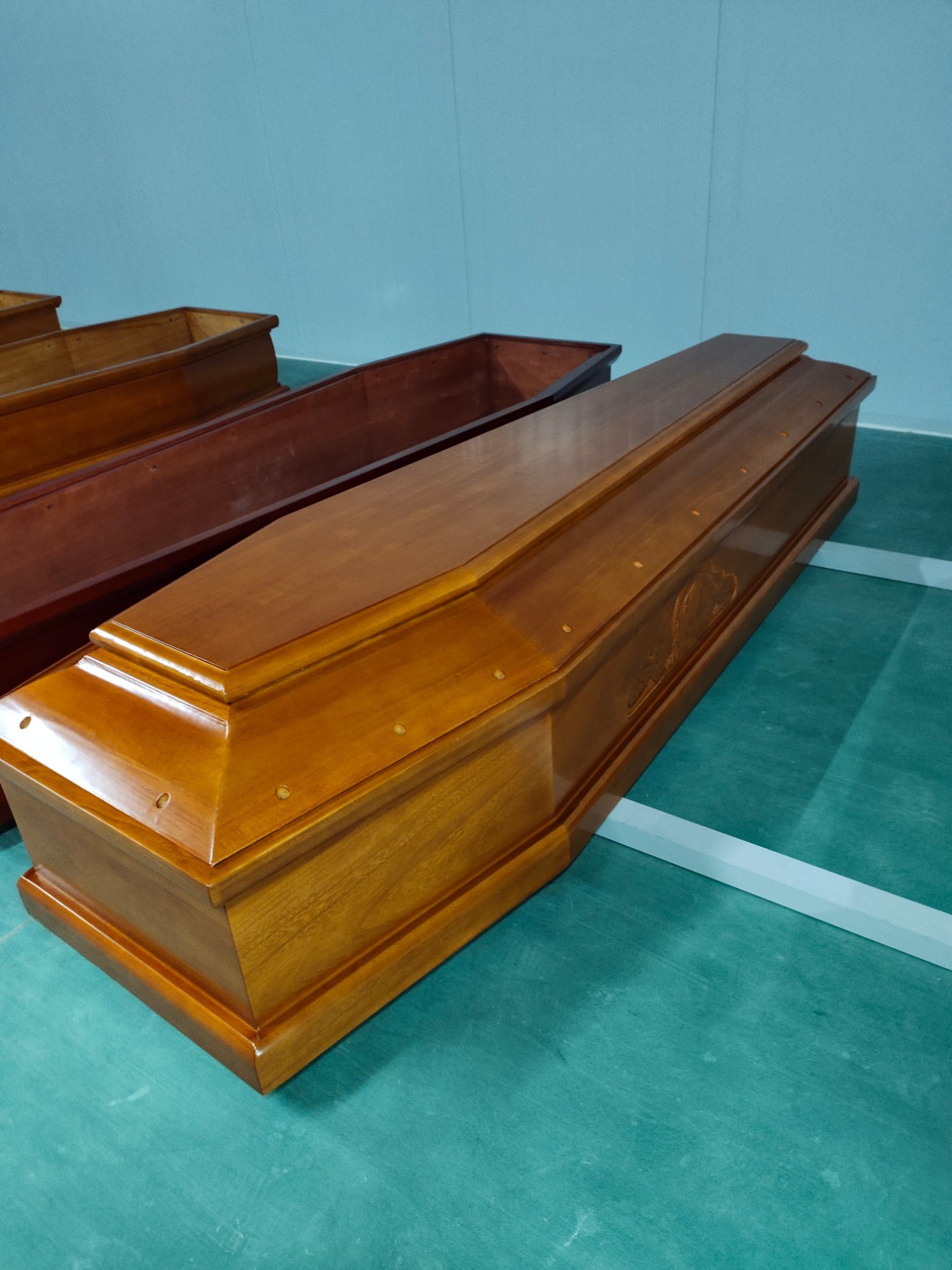 The head is placed higher than the rest of the body to avoid what is called in the mortician process as 'purging'. Purging refers to "leakage" from the mouth or the nose. The fluids that leak out can be for example, from blood or bile and so this is avoided where possible.
The head is placed higher than the rest of the body to avoid what is called in the mortician process as 'purging'. Purging refers to "leakage" from the mouth or the nose. The fluids that leak out can be for example, from blood or bile and so this is avoided where possible.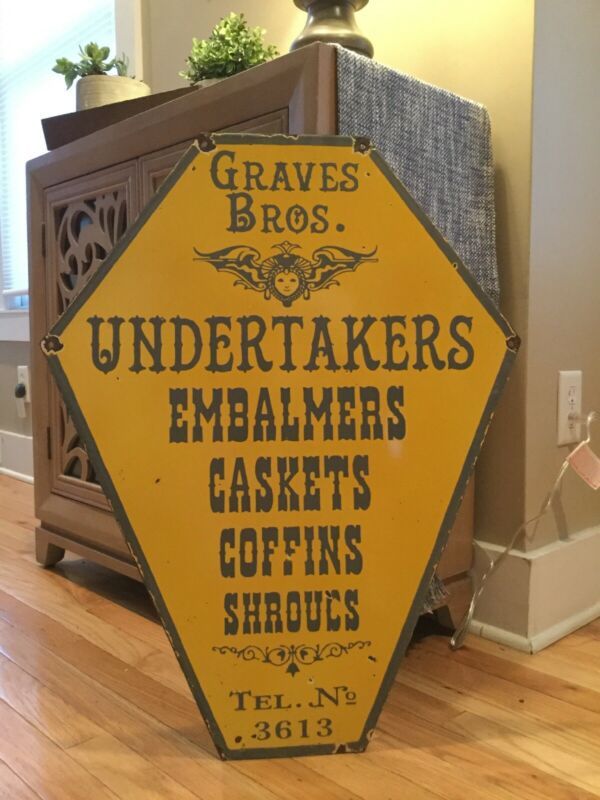 The clothes on the body of course have to be removed, which of course can take some work depending on how the person was dressed when they sadly died. Their clothes are carefully stored away and then they re-dress the body with a gown resembling those from hospital.
The clothes on the body of course have to be removed, which of course can take some work depending on how the person was dressed when they sadly died. Their clothes are carefully stored away and then they re-dress the body with a gown resembling those from hospital.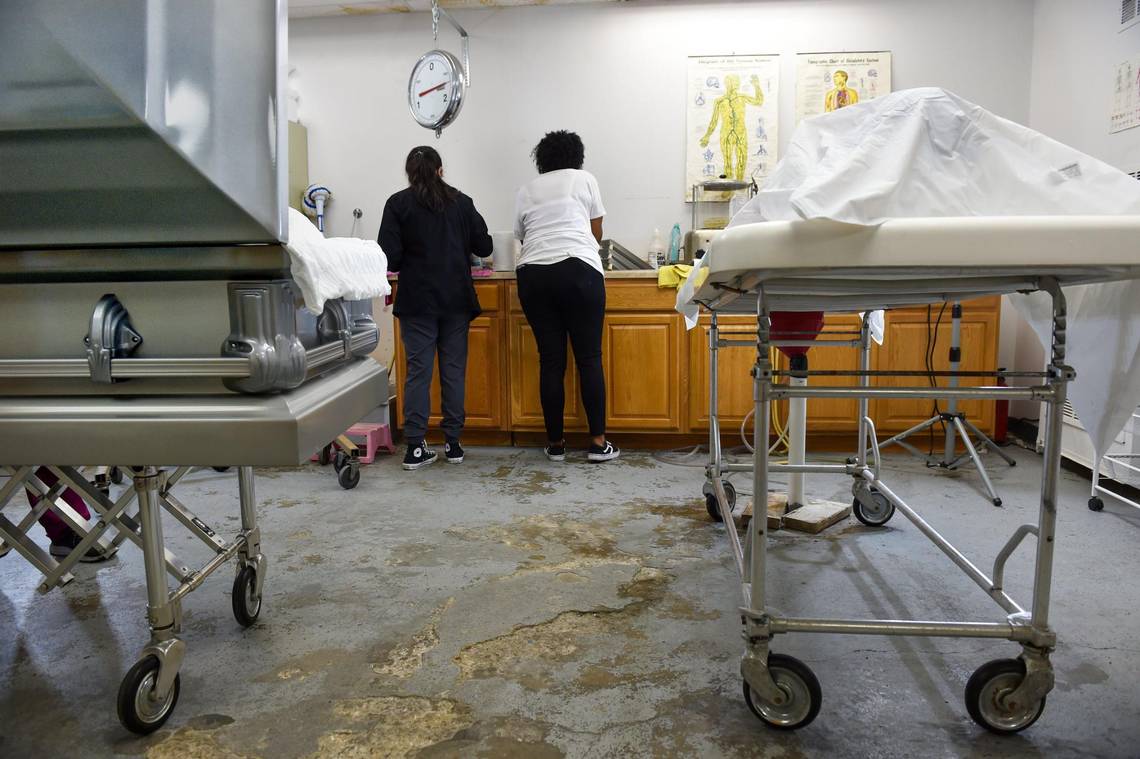 Of course another essential step is that the body is cleaned. This varies for each person depending on the state of the body. In most cases it does not require much of a cleaning process, but some bodies are more 'messy' and so the cleaning has to be more thorough.
Of course another essential step is that the body is cleaned. This varies for each person depending on the state of the body. In most cases it does not require much of a cleaning process, but some bodies are more 'messy' and so the cleaning has to be more thorough.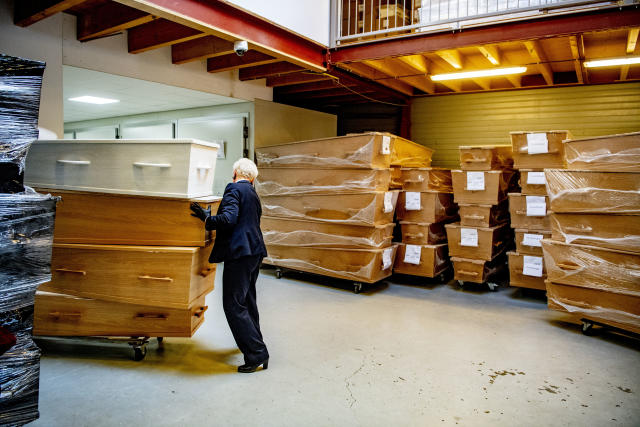 The first item of clothing to be put on is the underwear, to make sure the body is covered. Bodies are covered as soon as possible with underwear to protect the dignity and respect of the person who is deceased and also for the sake of the mortician too.
The first item of clothing to be put on is the underwear, to make sure the body is covered. Bodies are covered as soon as possible with underwear to protect the dignity and respect of the person who is deceased and also for the sake of the mortician too.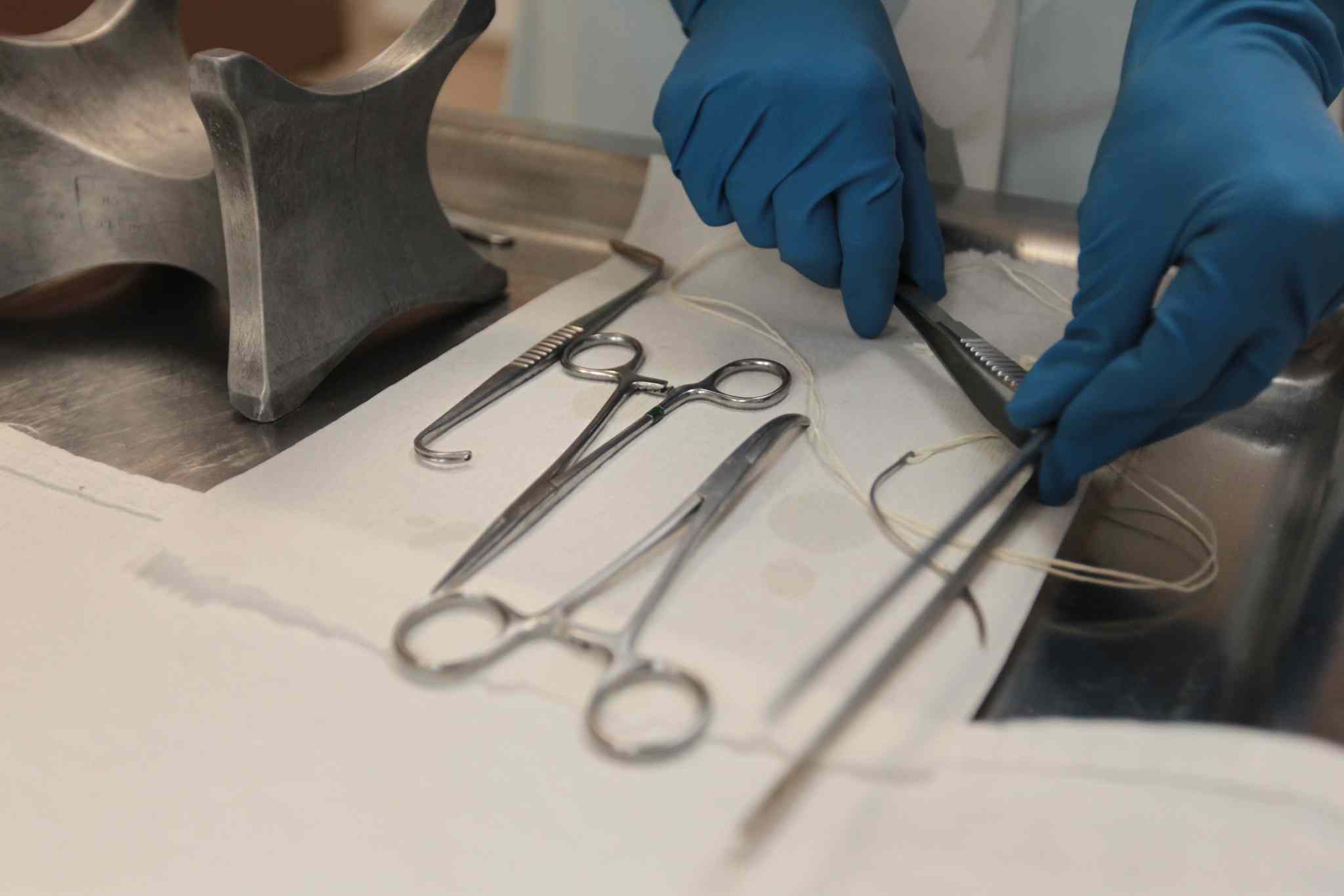 When someone dies, the eyes naturally sink in leaving noticeable dents in the face. And so "eye caps" are place inside the eye to prevent this. These are just small little flesh coloured disks which are inserted underneath the eye lids. They have tiny spikes on the outer side in order to hold the eyes closed.
When someone dies, the eyes naturally sink in leaving noticeable dents in the face. And so "eye caps" are place inside the eye to prevent this. These are just small little flesh coloured disks which are inserted underneath the eye lids. They have tiny spikes on the outer side in order to hold the eyes closed.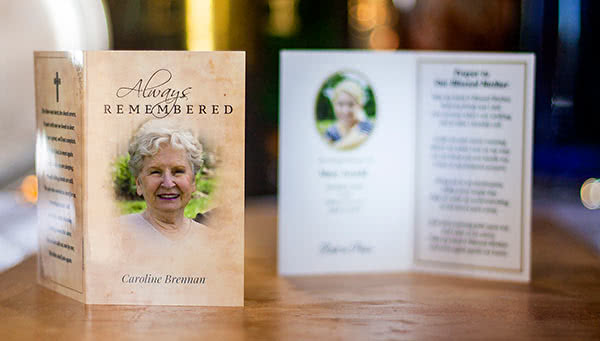 This also depends on the situation. But, a little bit of makeup is often applied so that the person looks more like themselves and to add some colour back into the face. This is done mainly for the sake of the grieving family who may want to visit the body.
This also depends on the situation. But, a little bit of makeup is often applied so that the person looks more like themselves and to add some colour back into the face. This is done mainly for the sake of the grieving family who may want to visit the body.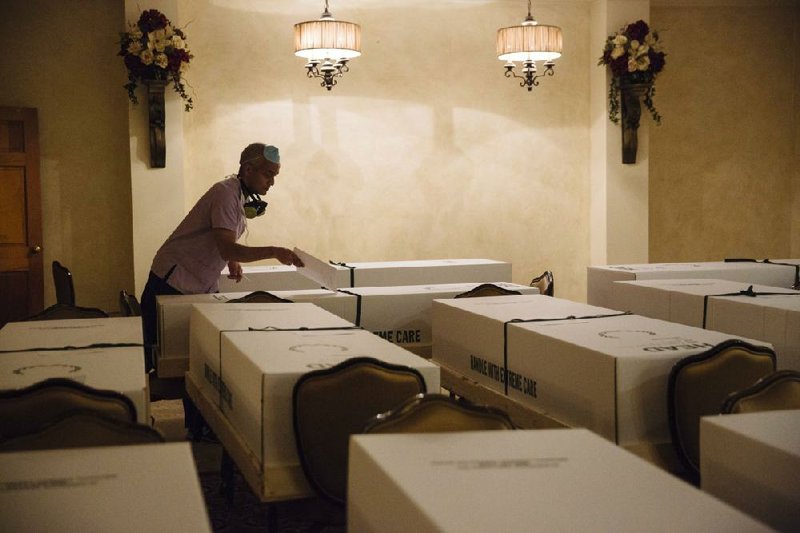 Because fluids naturally secrete from the nose and mouth, they are essentially plugged. This is done by taking cotton wadding and placing it down the throat as well as up the nose in order to prevent leakage so that the body can be preserved properly.
Because fluids naturally secrete from the nose and mouth, they are essentially plugged. This is done by taking cotton wadding and placing it down the throat as well as up the nose in order to prevent leakage so that the body can be preserved properly.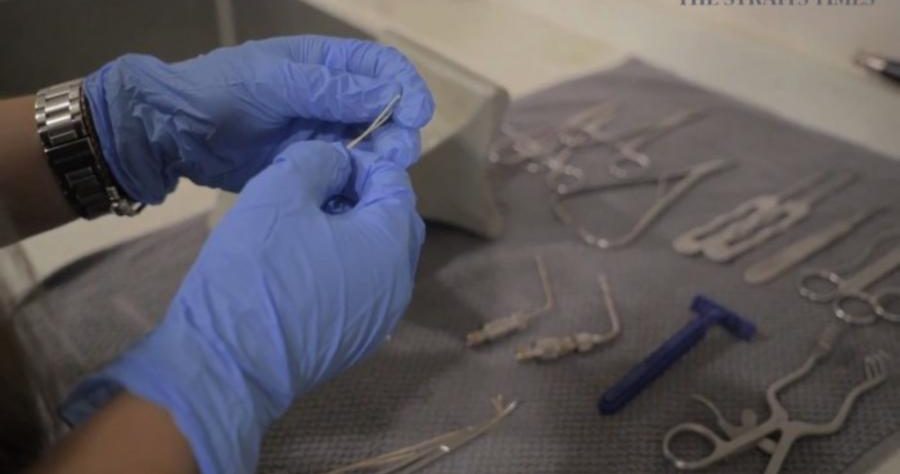 This point sounds a little bit strange and it is an idea that can sound shocking to those who are not inside the secrets of he mortician process. But it is delicately done by taking a needle and inserting i inside the throat first. Then the mouth is effectively sealed shut so that it cannot drop open.
This point sounds a little bit strange and it is an idea that can sound shocking to those who are not inside the secrets of he mortician process. But it is delicately done by taking a needle and inserting i inside the throat first. Then the mouth is effectively sealed shut so that it cannot drop open.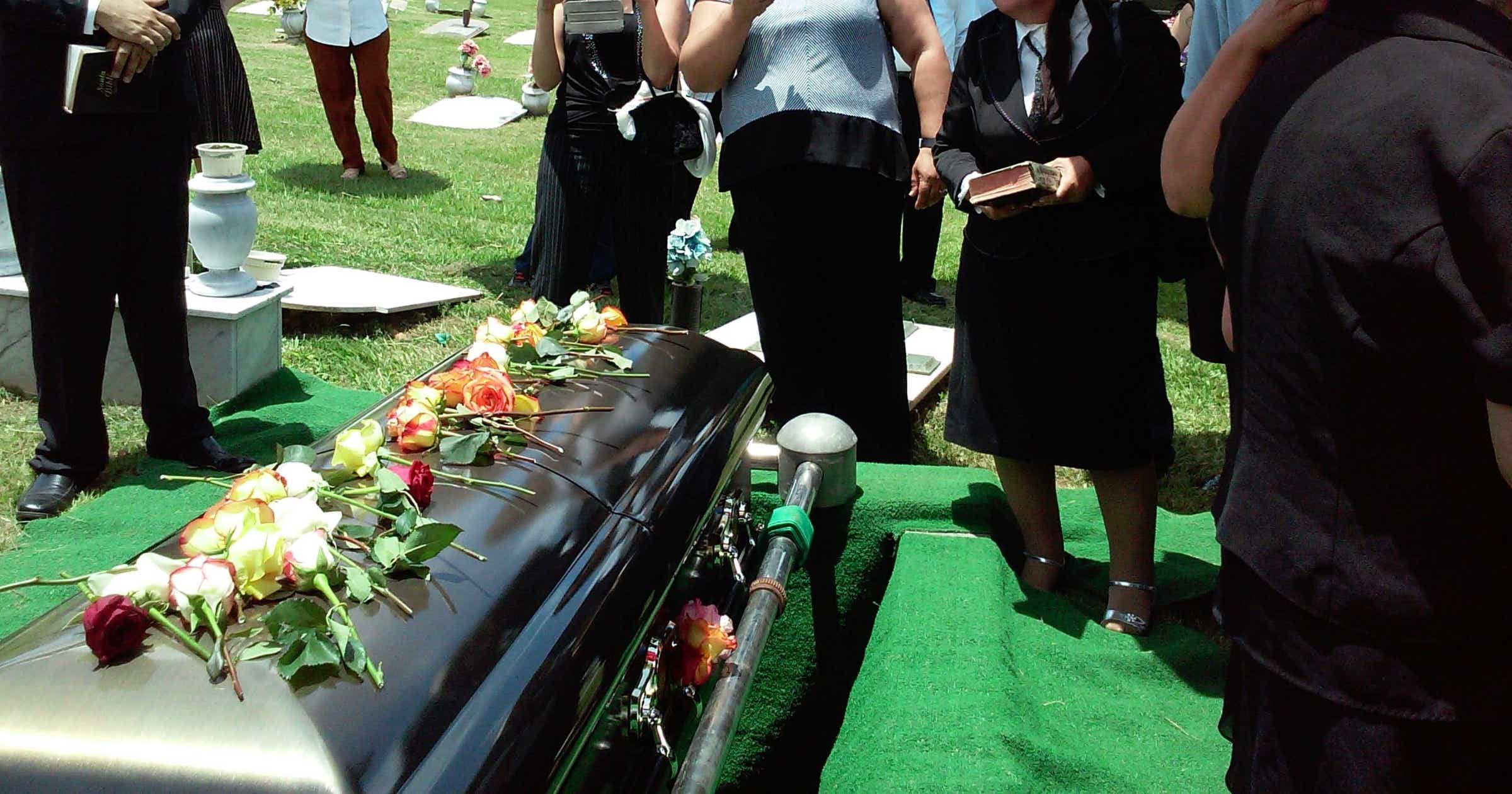 The process of embalming the body varies massively as there are different kinds of embalming which involve different processes. But essentially, preservation fluids are put inside the body as well as colourants. This preserves the body and also makes it look a lot more normal again.
The process of embalming the body varies massively as there are different kinds of embalming which involve different processes. But essentially, preservation fluids are put inside the body as well as colourants. This preserves the body and also makes it look a lot more normal again.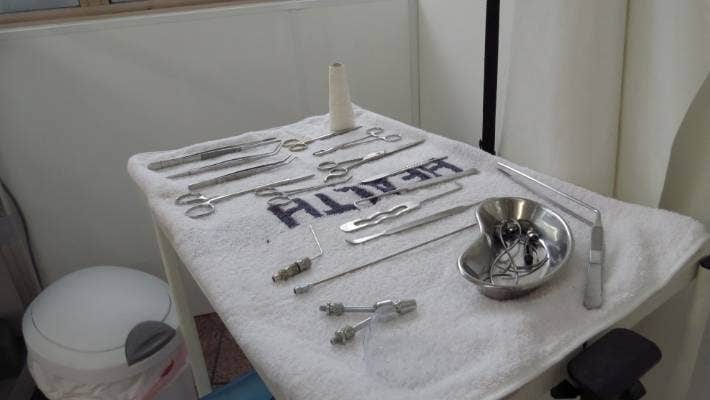 Full embalming is a much bigger and more complex process. Each and every one of the organs are removed (even including the brains), then they are scattered with a preserving powder and then everything is placed back inside the body in correct placement.
Full embalming is a much bigger and more complex process. Each and every one of the organs are removed (even including the brains), then they are scattered with a preserving powder and then everything is placed back inside the body in correct placement. If the body looks in any danger of leaking, they the mortician will apply some kind of nappy to collect any fluid and prevent the body from leaking out. The mortician tries to prevent the body from leaking any fluid. And so if the body looks as though it may lose fluid in this way, a nappy is put on.
If the body looks in any danger of leaking, they the mortician will apply some kind of nappy to collect any fluid and prevent the body from leaking out. The mortician tries to prevent the body from leaking any fluid. And so if the body looks as though it may lose fluid in this way, a nappy is put on.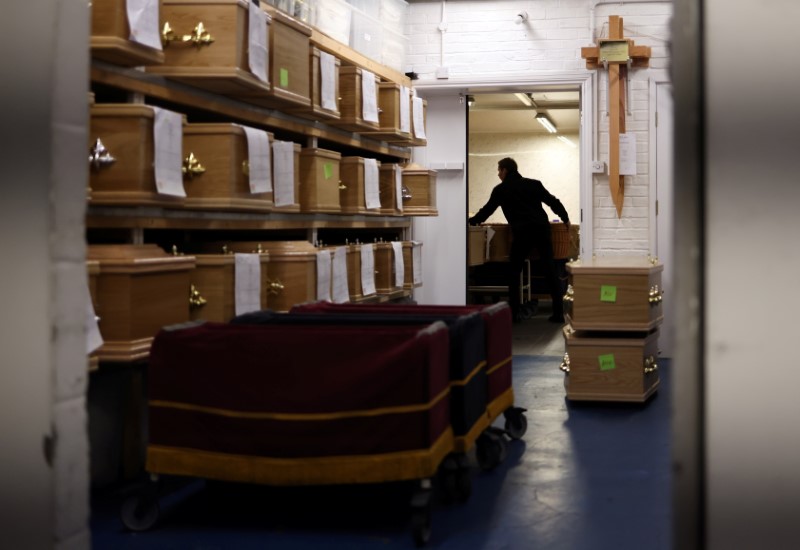 As we mention previously, there are many typed of embalming and the different kinds take different amounts of time. For example some embalming takes a few hours but some can take up to a couple of days for the process to be finished.
As we mention previously, there are many typed of embalming and the different kinds take different amounts of time. For example some embalming takes a few hours but some can take up to a couple of days for the process to be finished.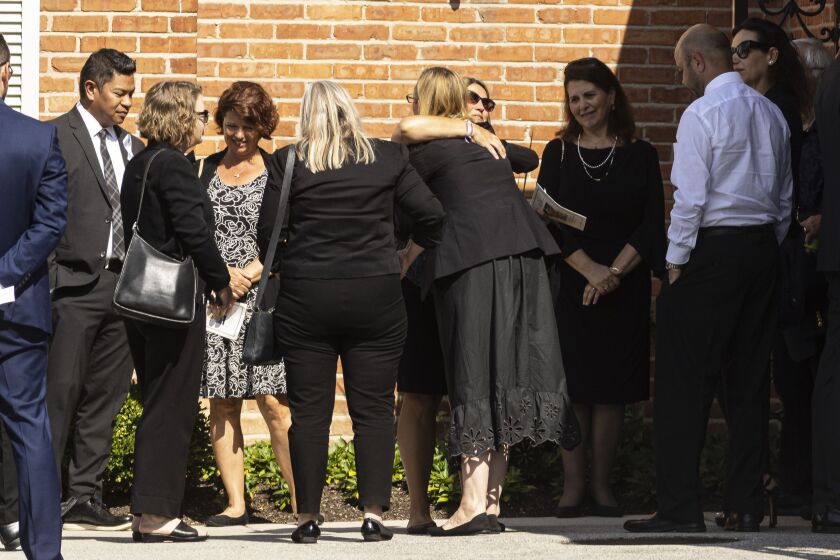 Again, there are a lot of misconceptions about being an mortician. One of these is that the mortician is constantly around death. But actually the majority of time according to morticians themselves, is amongst the living - the families of the deceased.
Again, there are a lot of misconceptions about being an mortician. One of these is that the mortician is constantly around death. But actually the majority of time according to morticians themselves, is amongst the living - the families of the deceased.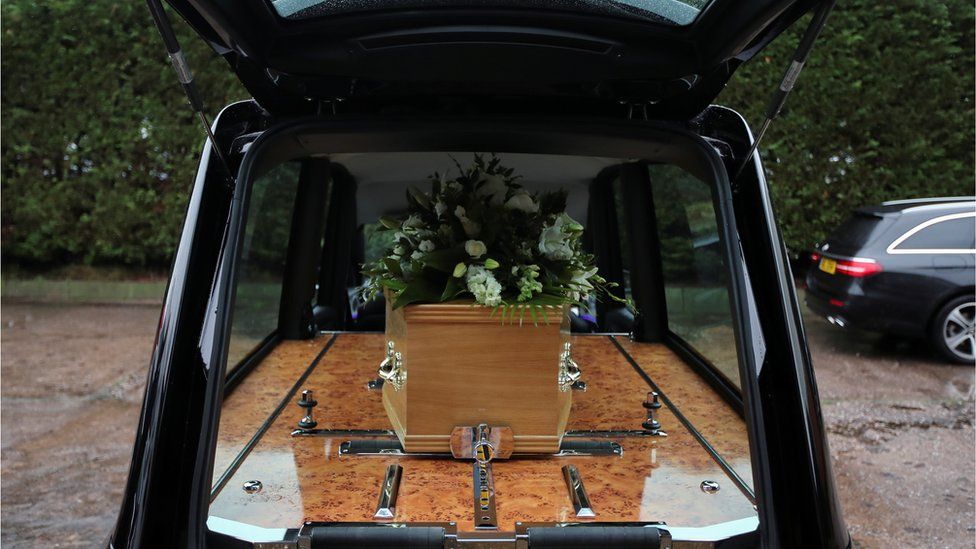 According to morticians, it is harder dealing with larger bodies - the larger it is the more difficult according to some. This is throughout the entire process from carrying the body from place to place, undressing and embalming. Because each step requires more work and takes more time.
According to morticians, it is harder dealing with larger bodies - the larger it is the more difficult according to some. This is throughout the entire process from carrying the body from place to place, undressing and embalming. Because each step requires more work and takes more time.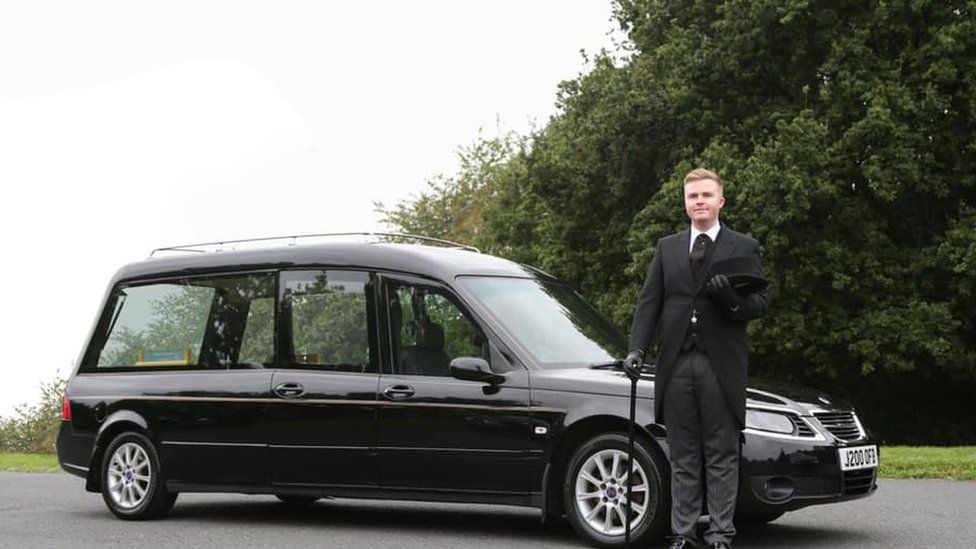 One mortician had revealed that the smell of decomposition is string, but the best thing to do is not to shy away from the smell or to mask it with another. He claimed that the best thing to do is take two big inhales, after that you adjust and get used to it.
One mortician had revealed that the smell of decomposition is string, but the best thing to do is not to shy away from the smell or to mask it with another. He claimed that the best thing to do is take two big inhales, after that you adjust and get used to it.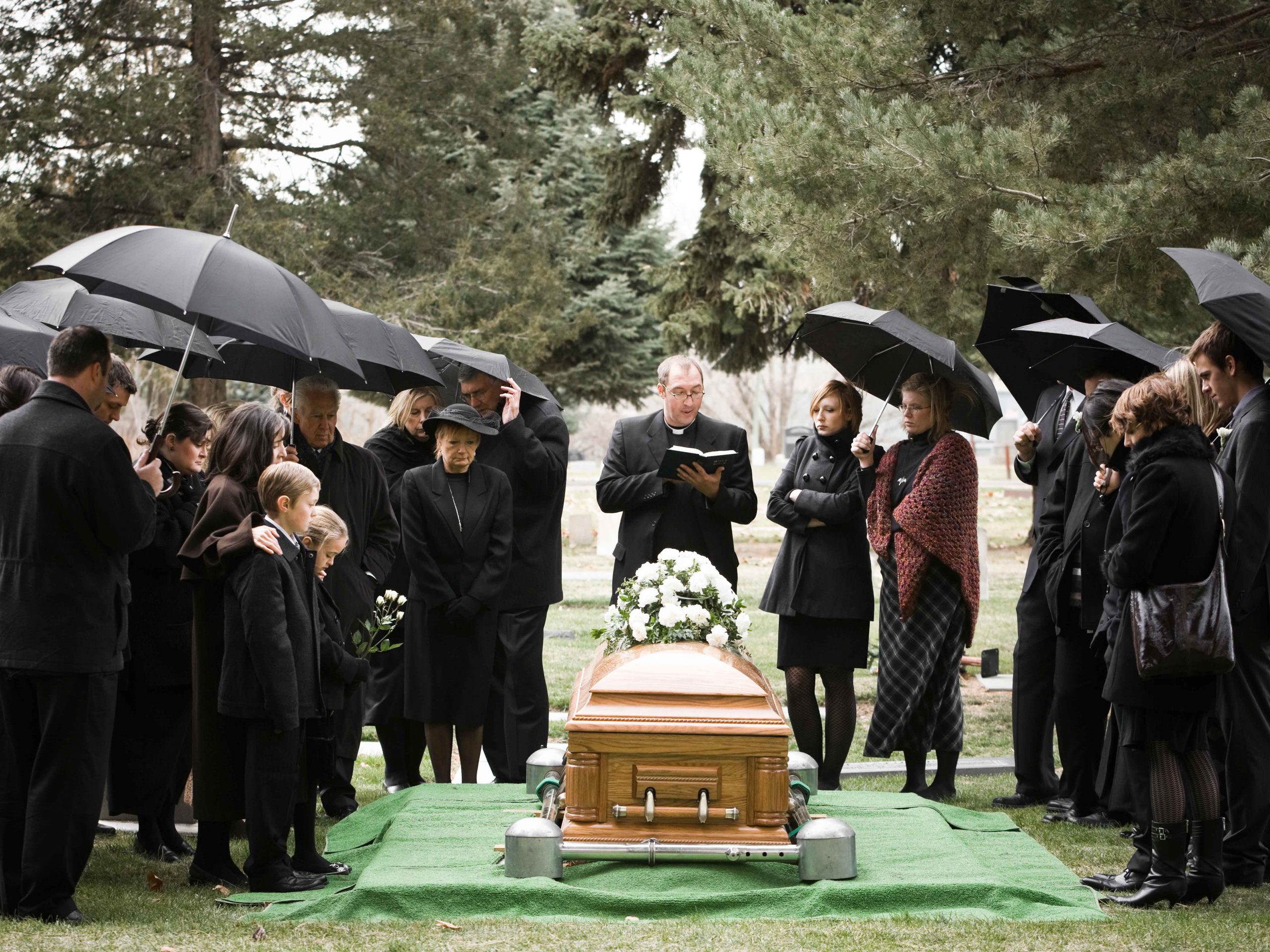 Morticians have revealed this dark secret about the realities of dealing with bodies. It is true that bodies do turn green eventually. The process of turning green always starts first around the stomach area, and then spreads to other parts of the body.
Morticians have revealed this dark secret about the realities of dealing with bodies. It is true that bodies do turn green eventually. The process of turning green always starts first around the stomach area, and then spreads to other parts of the body. It may sound strange because dealing with deceased bodies is a job very few have the capacity for. You would naturally think that it may require a lot of special qualifications. However that is no the case, you do not technically need qualifications to become an mortician.
It may sound strange because dealing with deceased bodies is a job very few have the capacity for. You would naturally think that it may require a lot of special qualifications. However that is no the case, you do not technically need qualifications to become an mortician.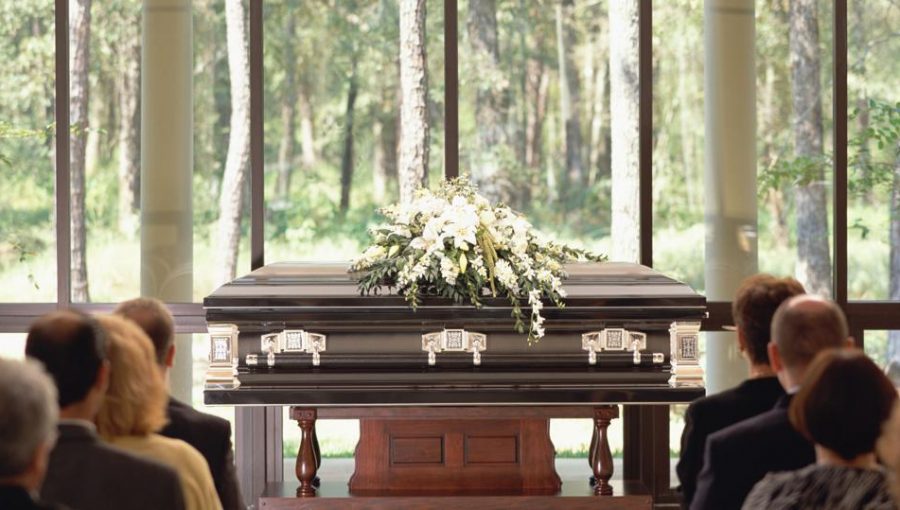 There is a common assumption that bodies are cold. This is because a living bod is warm and so in comparison a body is cold. But, it is actually just room temperature. However of course when it is kept in a fridge the body is cold to touch.
There is a common assumption that bodies are cold. This is because a living bod is warm and so in comparison a body is cold. But, it is actually just room temperature. However of course when it is kept in a fridge the body is cold to touch.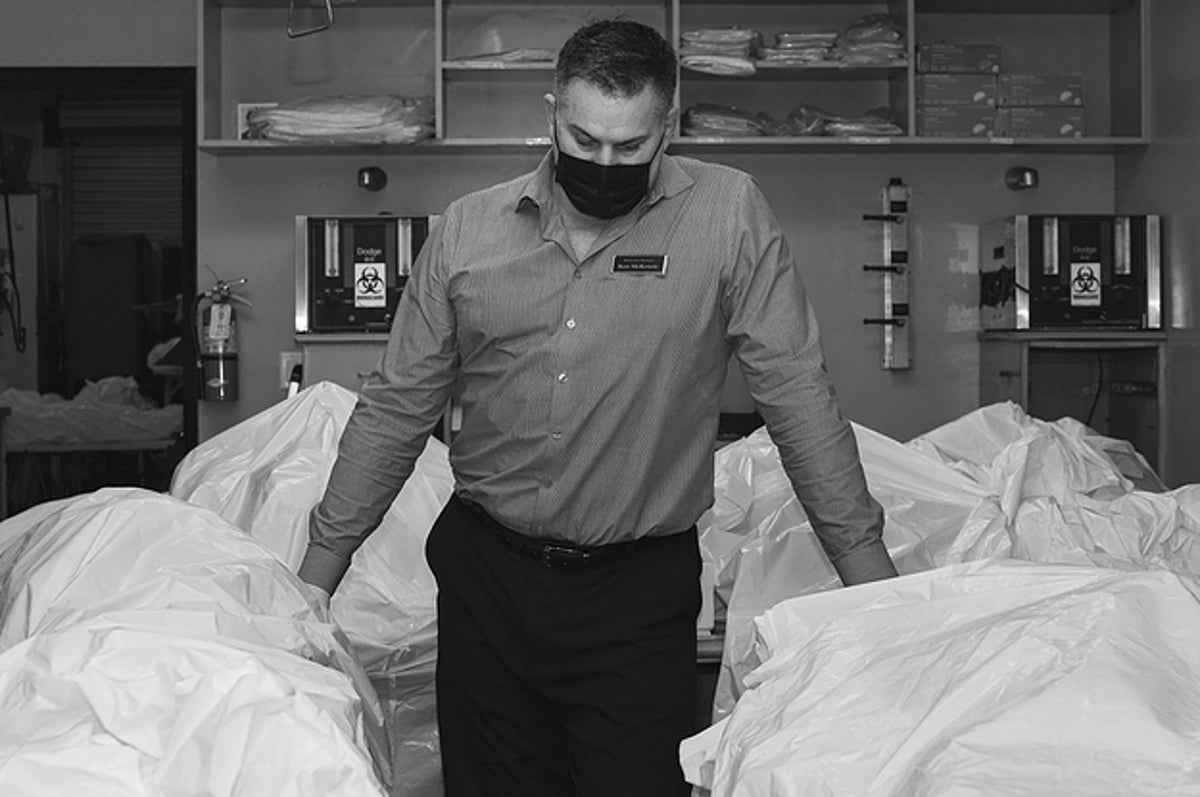 Rigor-mortis refers to a state when the limbs of a deceased body start to stiffen. It makes the body look and feel rigid and the body stays in the same position when moved. It does not happen to all bodies - even the majority - but with some it does occur.
Rigor-mortis refers to a state when the limbs of a deceased body start to stiffen. It makes the body look and feel rigid and the body stays in the same position when moved. It does not happen to all bodies - even the majority - but with some it does occur.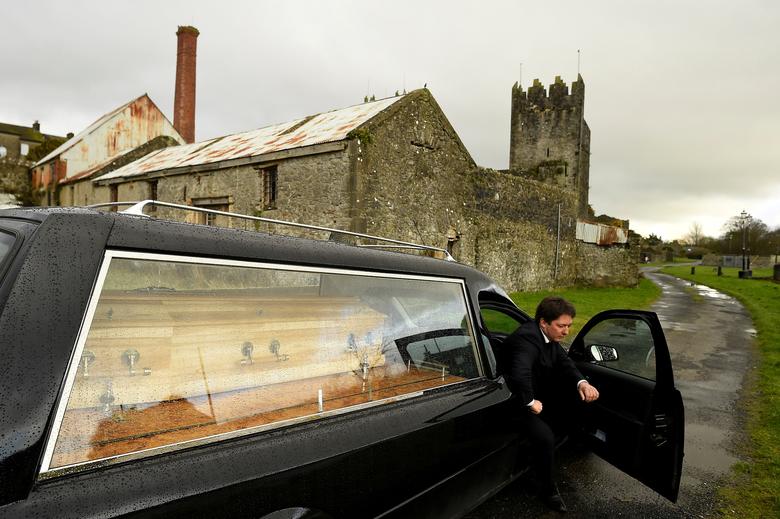 But, even when bodies do have rigor-mortis it is easily stopped it does not mean it is permament. This happens by the mortician bending and moving the joints about for a while. The body then comes out its state rigor-mortis so that it then becomes more moveable again.
But, even when bodies do have rigor-mortis it is easily stopped it does not mean it is permament. This happens by the mortician bending and moving the joints about for a while. The body then comes out its state rigor-mortis so that it then becomes more moveable again.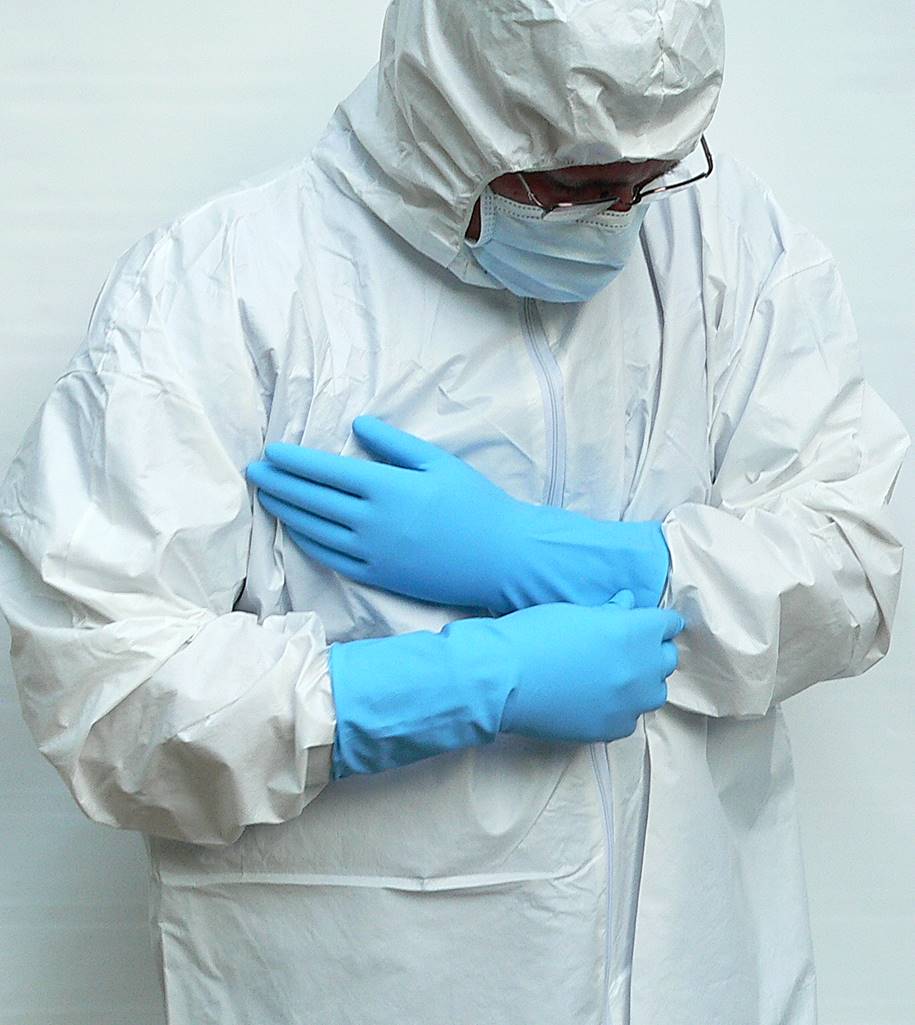 This again is very dependent. Because a lot of the time, the body will not be messy and the job is not messy at all.Sometimes in certain cases there is a lot of mess, which is sometimes inevitable. But, the morticians are geared up in protective clothing.
This again is very dependent. Because a lot of the time, the body will not be messy and the job is not messy at all.Sometimes in certain cases there is a lot of mess, which is sometimes inevitable. But, the morticians are geared up in protective clothing. Of course when having such a sensitive job there comes a lot of paperwork. Their records have to show the name of the deceased and their date of death as well as their age at the time of death. Also the place the body was transferred from and the date this happened. Also,, who was responsible for the transfer along with any valuables attached to the person.
Of course when having such a sensitive job there comes a lot of paperwork. Their records have to show the name of the deceased and their date of death as well as their age at the time of death. Also the place the body was transferred from and the date this happened. Also,, who was responsible for the transfer along with any valuables attached to the person. There is a very precise temperature that you can keep bodies at. This is between 3 and 5 degrees celsius. So the fridges are set between this temperature. Any lower and the body would start to freeze. Any higher and the body would start to decay and decompose more rapidly.
There is a very precise temperature that you can keep bodies at. This is between 3 and 5 degrees celsius. So the fridges are set between this temperature. Any lower and the body would start to freeze. Any higher and the body would start to decay and decompose more rapidly. Morticians have revealed this secret.If you leave a body in a fridge too long, a certain fungi will grow on it. The fungus is either orange or white and not found anywhere else other than a body when it is in those conditions. Out of the fridge, the fungus does not appear.
Morticians have revealed this secret.If you leave a body in a fridge too long, a certain fungi will grow on it. The fungus is either orange or white and not found anywhere else other than a body when it is in those conditions. Out of the fridge, the fungus does not appear.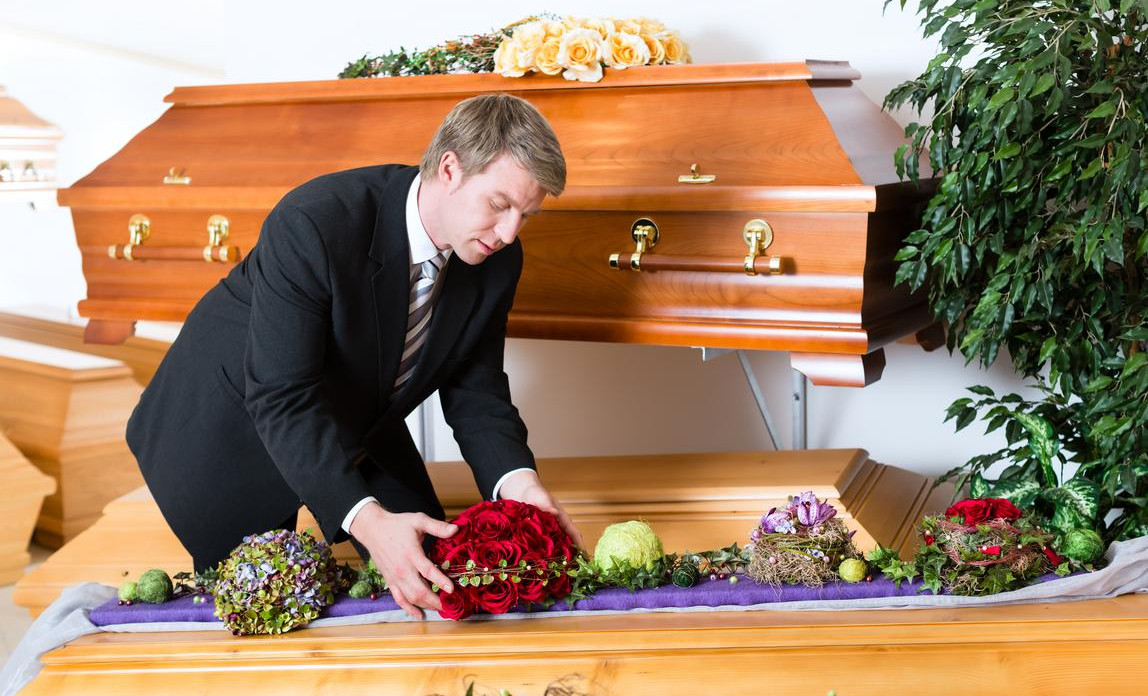 It has a very morbid reputation, and it is certainly understandable why people assume that it must be a very depressing job to have. But, according to morticians they clarify that it is not in fact a morbid job. Some even go as far to say it is just the same as any normal job.
It has a very morbid reputation, and it is certainly understandable why people assume that it must be a very depressing job to have. But, according to morticians they clarify that it is not in fact a morbid job. Some even go as far to say it is just the same as any normal job. Morticians have claimed that the more you try and avoid the smell - the worse it us.These tricks such as playing some toothpaste under your nostrils or trying not to breathe much actually only make the smell last longer than if you just don't try at all.
Morticians have claimed that the more you try and avoid the smell - the worse it us.These tricks such as playing some toothpaste under your nostrils or trying not to breathe much actually only make the smell last longer than if you just don't try at all. There is a misconception that bodies are collected and transported using a hearse. But these are rarely used, these are mainly for ceremonial purposes alone. So actually it is usually just ordinary mini van so that t is not obvious to the rest of the world what is happening.
There is a misconception that bodies are collected and transported using a hearse. But these are rarely used, these are mainly for ceremonial purposes alone. So actually it is usually just ordinary mini van so that t is not obvious to the rest of the world what is happening. To a grieving family, some comfort comes by looking at the peaceful expression on the face of their deceased loved one. But this takes a lot of work. The features have to be set in place it does not happen naturally which most people tend to assume...
To a grieving family, some comfort comes by looking at the peaceful expression on the face of their deceased loved one. But this takes a lot of work. The features have to be set in place it does not happen naturally which most people tend to assume... This is a horrifying thought, to think of superglue being used on a body. But according to Smoke Gets In Your Eyes, mortician Caitlin Doughty reveals: “If the usual methods of setting the features aren’t sufficient to keep the eyes closed or the mouth shut, superglue is a secret weapon.”
This is a horrifying thought, to think of superglue being used on a body. But according to Smoke Gets In Your Eyes, mortician Caitlin Doughty reveals: “If the usual methods of setting the features aren’t sufficient to keep the eyes closed or the mouth shut, superglue is a secret weapon.” Mortician Amy Cunningham revealed in an interview another method of achieving the expected look: “If you need to keep a deceased person’s hands folded neatly at their abdomen, but their arms keep falling down into the sides of the casket, you can gently bind their thumbs with a ponytail tie.”
Mortician Amy Cunningham revealed in an interview another method of achieving the expected look: “If you need to keep a deceased person’s hands folded neatly at their abdomen, but their arms keep falling down into the sides of the casket, you can gently bind their thumbs with a ponytail tie.” Protective caskets are sold under the guise of protecting the body from any outside factors, for example any of the outside penetrating in such as the earth or insects. But actually, it makes the inside a breeding ground for bacteria and encourages the inside to rot away.
Protective caskets are sold under the guise of protecting the body from any outside factors, for example any of the outside penetrating in such as the earth or insects. But actually, it makes the inside a breeding ground for bacteria and encourages the inside to rot away. Sometimes caskets explode. This is because of the buildup of methane gas can cause what people in the industry call “exploding casket syndrome”. The gas builds up util the pressure reaches a point where the gas will literally make the casket explode open. And so they have to be unsealed regularly.
Sometimes caskets explode. This is because of the buildup of methane gas can cause what people in the industry call “exploding casket syndrome”. The gas builds up util the pressure reaches a point where the gas will literally make the casket explode open. And so they have to be unsealed regularly. Pace makers can cause damage to the cremation machine because of the batteries inside of them. This is why it is so important for the undertaker to make sure the remove them in the first instance so that they are not still present during the cremation.
Pace makers can cause damage to the cremation machine because of the batteries inside of them. This is why it is so important for the undertaker to make sure the remove them in the first instance so that they are not still present during the cremation. Morticians use rose coloured lighting to give the appearance of pinky rosy flesh, rather than grey. Which of course is partially achieved by the staining of the flesh but sometime it is not enough and so the rosy coloured lighting helps to create this illusions too.
Morticians use rose coloured lighting to give the appearance of pinky rosy flesh, rather than grey. Which of course is partially achieved by the staining of the flesh but sometime it is not enough and so the rosy coloured lighting helps to create this illusions too. It sounds like a shocking statistic but around 120 gallons of waste are produced from an embalming. These include things such as blood, fecal matter, and the contents of the internal organs, as well as any chemicals that have been added which have been released from the body.
It sounds like a shocking statistic but around 120 gallons of waste are produced from an embalming. These include things such as blood, fecal matter, and the contents of the internal organs, as well as any chemicals that have been added which have been released from the body. What is even perhaps more shocking that realising just how much waste is produced from one embalming, is realising that it goes straight down the drain.And no, not a hazardous waste drain just the usual drain which we use daily. It is an uncomfortable thought.
What is even perhaps more shocking that realising just how much waste is produced from one embalming, is realising that it goes straight down the drain.And no, not a hazardous waste drain just the usual drain which we use daily. It is an uncomfortable thought. Morticians and those ding the embalming are actually at health risks because of the dangerous and toxic chemicals that they work with on a daily basis. These chemicals have been linked to health problems so they have to be very careful when handling them.
Morticians and those ding the embalming are actually at health risks because of the dangerous and toxic chemicals that they work with on a daily basis. These chemicals have been linked to health problems so they have to be very careful when handling them. It is a dream of many to be buried under a tree. But it is not actually possible. A body must be buried at least four feet from a tree to protect its root system and the health of the tree. So the idea of being buried under a tree is not actually viable, but quite close.
It is a dream of many to be buried under a tree. But it is not actually possible. A body must be buried at least four feet from a tree to protect its root system and the health of the tree. So the idea of being buried under a tree is not actually viable, but quite close. Some people and some morticians actually do not like the idea of preserving the body or embalming. One mortician thinks hat a body should look dead, rather than being falsely presented. One reason for this is to help the family come to terms with it and deal with it.
Some people and some morticians actually do not like the idea of preserving the body or embalming. One mortician thinks hat a body should look dead, rather than being falsely presented. One reason for this is to help the family come to terms with it and deal with it. The death of a baby or child is so tragic that it is a general rule that funeral homes will do the service at cost due to the heartbreaking nature of the case. There are also charities which work with funeral homes to provide things for free for the family dealing with their loss.
The death of a baby or child is so tragic that it is a general rule that funeral homes will do the service at cost due to the heartbreaking nature of the case. There are also charities which work with funeral homes to provide things for free for the family dealing with their loss. If somebody is cremated with breast implants, they will melt inside of the cremation machine. Breast implants are one of those things which are often not removed, and so of course they melt down inside the cremation machine which does not cause too much damage.
If somebody is cremated with breast implants, they will melt inside of the cremation machine. Breast implants are one of those things which are often not removed, and so of course they melt down inside the cremation machine which does not cause too much damage. Things like hip replacements etc can be requested by the family to be kept. But, this rarely happens and so instead they are melted down with other plastics and used to make things such as road signs. They are removed as they cannot be burned with the ashes due to it being plastic.
Things like hip replacements etc can be requested by the family to be kept. But, this rarely happens and so instead they are melted down with other plastics and used to make things such as road signs. They are removed as they cannot be burned with the ashes due to it being plastic. In some funeral homes they employ dogs. Therapy dogs are a great comforter and a great way for those who are grieving to cope with loss. They are the best companions and there are chemicals released when you spend close contact with a dog or animal that relieve stress.
In some funeral homes they employ dogs. Therapy dogs are a great comforter and a great way for those who are grieving to cope with loss. They are the best companions and there are chemicals released when you spend close contact with a dog or animal that relieve stress. You may have noticed that morticians cover the legs of the deceased. This is because the feet often do not have shoes on. They are difficult to place on because the feet have stiffened. Although this is not the only reason, there are other things such as for religious reasons.
You may have noticed that morticians cover the legs of the deceased. This is because the feet often do not have shoes on. They are difficult to place on because the feet have stiffened. Although this is not the only reason, there are other things such as for religious reasons. Caskets and funerals in general as well as embalming are not good for the planet.But there are ways to make it more friendlier to the earth if that is your intention. For example if you use a rental casket the body is then buried in something similar to a cardboard box which decomposes better.
Caskets and funerals in general as well as embalming are not good for the planet.But there are ways to make it more friendlier to the earth if that is your intention. For example if you use a rental casket the body is then buried in something similar to a cardboard box which decomposes better. When you have the ashes returned to you, make sure you ask the crematory before the return to transfer the ashes in a plain metal or plastic container. Otherwise they give you the ashes in a container which has temporary stamped on it as a way to get you to buy a more expensive urn
When you have the ashes returned to you, make sure you ask the crematory before the return to transfer the ashes in a plain metal or plastic container. Otherwise they give you the ashes in a container which has temporary stamped on it as a way to get you to buy a more expensive urn Once the skull has been taken apart it has to be put back together again and sometimes morticians will use denture adhesive to literally glue the cracks back together again and place the skull back as one. There are different methods to do this.
Once the skull has been taken apart it has to be put back together again and sometimes morticians will use denture adhesive to literally glue the cracks back together again and place the skull back as one. There are different methods to do this. Being a mortician is a calling- it is a hard job anyway. Never mind if they actually knew the person. This is very hard for the mortician when dealing with a body that they had a personal connection t. Even if that connection was not particularly close.
Being a mortician is a calling- it is a hard job anyway. Never mind if they actually knew the person. This is very hard for the mortician when dealing with a body that they had a personal connection t. Even if that connection was not particularly close. Families or loved ones of the deceased have been known to request some very particular and sometimes highly unusual things when they are having their loved one buried. And sometimes the deceased person has made these requests themselves, such as some insist on wearing spandex.
Families or loved ones of the deceased have been known to request some very particular and sometimes highly unusual things when they are having their loved one buried. And sometimes the deceased person has made these requests themselves, such as some insist on wearing spandex. Of course people die in many different ways. And sometimes sadly the circumstanced and condition of the body is very horrifying. There are occasions where the deceased has to have their whole head reattached to their body for the embalming process and funeral process.
Of course people die in many different ways. And sometimes sadly the circumstanced and condition of the body is very horrifying. There are occasions where the deceased has to have their whole head reattached to their body for the embalming process and funeral process. And this is definitely not easy to do. It requires a LOT of work - hours to be able to reattach the head back to the body and make it appear as though it was never separated in the first place. It takes a lot of equipment and time to be able to accomplish this.
And this is definitely not easy to do. It requires a LOT of work - hours to be able to reattach the head back to the body and make it appear as though it was never separated in the first place. It takes a lot of equipment and time to be able to accomplish this. Sometimes bodies are extremely dehydrated- not often, but when they are it is very apparent. In fact, they look entirely different to bodies that are hydrated. But, this is reversed when the fluids are inserted into the body during embalming the body.
Sometimes bodies are extremely dehydrated- not often, but when they are it is very apparent. In fact, they look entirely different to bodies that are hydrated. But, this is reversed when the fluids are inserted into the body during embalming the body. Blood settles when you die and so depending on the position of the body when he person dies, the blood will settle there. This makes sense when you take into consideration of how liquids simply work but the effect when somebody has died can have a strange effect and look.
Blood settles when you die and so depending on the position of the body when he person dies, the blood will settle there. This makes sense when you take into consideration of how liquids simply work but the effect when somebody has died can have a strange effect and look. For example if the body is on its side, then one side of the body swells with the blood and one side of the body sort of drains... According to morticians it can look very odd. In fact one revealed how all the blood in one mans body had gone to the side of his face.
For example if the body is on its side, then one side of the body swells with the blood and one side of the body sort of drains... According to morticians it can look very odd. In fact one revealed how all the blood in one mans body had gone to the side of his face. Again, death can be horrifying and there are lots of different ways that make the body look different in different circumstances. For example accidents may happen where damage is caused to the face. This requires the mortician to reconstruct the face.
Again, death can be horrifying and there are lots of different ways that make the body look different in different circumstances. For example accidents may happen where damage is caused to the face. This requires the mortician to reconstruct the face. To do this you would probably not guess how. But one way thy actually manage to achieve this is using modelling clay. To literally try and rebuild some of the facial features which have been disjointed or damaged in any way and make the face look more peaceful again.
To do this you would probably not guess how. But one way thy actually manage to achieve this is using modelling clay. To literally try and rebuild some of the facial features which have been disjointed or damaged in any way and make the face look more peaceful again. We have already discussed how there is a different process for different sized bodies. But it also affects the cemetery plots. If the person was larger the family or loved ones may actually have to purchase two cemetery plots rather than one for the coffin to fit.
We have already discussed how there is a different process for different sized bodies. But it also affects the cemetery plots. If the person was larger the family or loved ones may actually have to purchase two cemetery plots rather than one for the coffin to fit. During an autopsy all of the organs are removed from the body. They are held in a bucket to store them until the work is done on the body that needs to be completed. Because of course, the organs are needed again to be put back inside of the body.
During an autopsy all of the organs are removed from the body. They are held in a bucket to store them until the work is done on the body that needs to be completed. Because of course, the organs are needed again to be put back inside of the body. The bucket where the organs are kept is filled with cavity fluid. This is a liquid which is a higher concentration of the embalming fluid that is injected into the vascular system. This means that the organs will be preserved whilst they remain outside of the body.
The bucket where the organs are kept is filled with cavity fluid. This is a liquid which is a higher concentration of the embalming fluid that is injected into the vascular system. This means that the organs will be preserved whilst they remain outside of the body. There is a lot of gory detail when it comes to the secrets of a mortician. And as we know, lots of things from the body have to be removed, sewn, cut...and all sorts of other things. Another of these horrifying concepts is the fact that the vessels in the body have to be severed.
There is a lot of gory detail when it comes to the secrets of a mortician. And as we know, lots of things from the body have to be removed, sewn, cut...and all sorts of other things. Another of these horrifying concepts is the fact that the vessels in the body have to be severed. Then they are not just severed and left. They are tied up. This is also to stop the vessels leaking where they have been severed. By tying them up the liquid cannot escape and cause leakages which as we now know is something morticians want to prevent.
Then they are not just severed and left. They are tied up. This is also to stop the vessels leaking where they have been severed. By tying them up the liquid cannot escape and cause leakages which as we now know is something morticians want to prevent. Then that is not the end of that process. As with everything in the process it is intricate and lengthy. So the mortician then has to inject the vessel and then drain them. Again, this is so that the liquid from inside cannot escape through the body.
Then that is not the end of that process. As with everything in the process it is intricate and lengthy. So the mortician then has to inject the vessel and then drain them. Again, this is so that the liquid from inside cannot escape through the body. Then...they are disinfected after being drained. Everything during the morticians process is thoroughly cleaned and disinfected. Of course because the body is being preserved everything has to be as clean as possible and so even the vessels are disinfected.
Then...they are disinfected after being drained. Everything during the morticians process is thoroughly cleaned and disinfected. Of course because the body is being preserved everything has to be as clean as possible and so even the vessels are disinfected. Part of the skull has to be sawn off so that the brain can be removed (if the body is being embalmed). This sounds horrifying but it is so that everything can be cleaned and placed back to where it was. The skull then needs putting back so that the body has a normal shape again.
Part of the skull has to be sawn off so that the brain can be removed (if the body is being embalmed). This sounds horrifying but it is so that everything can be cleaned and placed back to where it was. The skull then needs putting back so that the body has a normal shape again. Then of course the skin has been cut and disrupted from he skull being sawn and the brain being removed. So the skin then needs to be pulled back over the head very carefully and attached as it was before so that it looks as though it has never been touched.
Then of course the skin has been cut and disrupted from he skull being sawn and the brain being removed. So the skin then needs to be pulled back over the head very carefully and attached as it was before so that it looks as though it has never been touched. Of course the skull needs placing back together. One was this can be done is using the needle injector which we have discussed previously. This essentially allows the pins to hold the skull back into place so that it can be tied down and appear as though it has not been disturbed.
Of course the skull needs placing back together. One was this can be done is using the needle injector which we have discussed previously. This essentially allows the pins to hold the skull back into place so that it can be tied down and appear as though it has not been disturbed. There is also another way to do this depending on the mortician or the skull or the situation etc. The mortician can drill holes into either side of the skull so that wires can be inserted which will be tied and then the skull will be held back together again.
There is also another way to do this depending on the mortician or the skull or the situation etc. The mortician can drill holes into either side of the skull so that wires can be inserted which will be tied and then the skull will be held back together again. The skin is moved and cut during embalmment so this needs to be placed back so that it does not appear as though it has ever moved. Hidden structures are used to secure the skin in place, to pull it back and secure it over areas where organs have been removed for example.
The skin is moved and cut during embalmment so this needs to be placed back so that it does not appear as though it has ever moved. Hidden structures are used to secure the skin in place, to pull it back and secure it over areas where organs have been removed for example. And then, because the skin has ben put back and held in place using fixtures it means that the skin does not form the protective barrier for liquid as it normally would. So sealants are placed over the fixtures in order to prevent any liquid from leaking.
And then, because the skin has ben put back and held in place using fixtures it means that the skin does not form the protective barrier for liquid as it normally would. So sealants are placed over the fixtures in order to prevent any liquid from leaking. And as well as sealants being used on the skin, plastic garments are also placed on the body to protect the clothing that has been put on the body, as well as the casket. This may any liquid will remain under the plastic and will not ruin to clothes or make the body appear wet.
And as well as sealants being used on the skin, plastic garments are also placed on the body to protect the clothing that has been put on the body, as well as the casket. This may any liquid will remain under the plastic and will not ruin to clothes or make the body appear wet. "Yes I donate" NHS organ donor card. Card in hand.
"Yes I donate" NHS organ donor card. Card in hand.
 Some people donate bones and if things such as femurs are being used or any long bones, then they have to be removed but then they have to be replaced so that the body retains its usual shape. So for this pipes are sometimes used to maintain the regular shape of the body.
Some people donate bones and if things such as femurs are being used or any long bones, then they have to be removed but then they have to be replaced so that the body retains its usual shape. So for this pipes are sometimes used to maintain the regular shape of the body. Also, skin donors of course have skin taken and donated. What happens is the skin has to be cauterised, and this is usually taken from the back and back side of the body. This is because the surface area of the skin here is larger than other parts of the body.
Also, skin donors of course have skin taken and donated. What happens is the skin has to be cauterised, and this is usually taken from the back and back side of the body. This is because the surface area of the skin here is larger than other parts of the body. Then, skin cannot be replaced. So, to stop the body and the casket getting wet where there is no skin protection, plastic garments are used instead. So if there is any leakage the plastic will prevent any spillages as such.
Then, skin cannot be replaced. So, to stop the body and the casket getting wet where there is no skin protection, plastic garments are used instead. So if there is any leakage the plastic will prevent any spillages as such. We already know the process behind making the yes appear more normal. But some people have to have eyes removed for tissue donation, or other circumstanced. And so in these cases the eye socket is first packed with cotton and then the plastic cap on top.
We already know the process behind making the yes appear more normal. But some people have to have eyes removed for tissue donation, or other circumstanced. And so in these cases the eye socket is first packed with cotton and then the plastic cap on top. Obviously depending on the situation of somebody's death, there could be bruising. This is stopped and prevented by using phenol to reduce the appearance so that the body looks more normal and presentable for the family. Otherwise seeing their loved one would be much more shocking and upsetting.
Obviously depending on the situation of somebody's death, there could be bruising. This is stopped and prevented by using phenol to reduce the appearance so that the body looks more normal and presentable for the family. Otherwise seeing their loved one would be much more shocking and upsetting. Again, we have discussed that sometimes the body does not arrive in good condition.Sometimes a bone or even multiple bones are broken. And so, the mortician has to make these appear not broken so that the body can lay to rest looking peaceful. So they actually have to stick them back together with glue.
Again, we have discussed that sometimes the body does not arrive in good condition.Sometimes a bone or even multiple bones are broken. And so, the mortician has to make these appear not broken so that the body can lay to rest looking peaceful. So they actually have to stick them back together with glue. Morticians and those in the business are trying to step away from using as much formaldehyde than they used to. his is because besides being very harmful to the environment it is also dangerous for the people working with it - it is a carcinogen and also causes sinus issues.
Morticians and those in the business are trying to step away from using as much formaldehyde than they used to. his is because besides being very harmful to the environment it is also dangerous for the people working with it - it is a carcinogen and also causes sinus issues. Some morticians think everyone should learn to prepare dead bodies themselves. This is because they think death should be normalised, rather then be something that we shy away from. Some think it would be a way to be able to accept and cope with death easier.
Some morticians think everyone should learn to prepare dead bodies themselves. This is because they think death should be normalised, rather then be something that we shy away from. Some think it would be a way to be able to accept and cope with death easier. The schedule of a mortician is unpredictable to say the least. It is definitely another hard thing about the job. But, morticians often feel that they have a calling to do their job and so they are willing to accept the hardships as they feel they are fulfilling their purpose.
The schedule of a mortician is unpredictable to say the least. It is definitely another hard thing about the job. But, morticians often feel that they have a calling to do their job and so they are willing to accept the hardships as they feel they are fulfilling their purpose. Those working at funeral homes actually advise you to shop around. The exact same service may cost thousands different depending on where you choose. In fact, just places miles apart can vary this much. So it is better to shop around to get a better deal.
Those working at funeral homes actually advise you to shop around. The exact same service may cost thousands different depending on where you choose. In fact, just places miles apart can vary this much. So it is better to shop around to get a better deal. All bodies are different even in death, they require different things and different ways of being embalmed etc. It is not just about size, many things can vary in terms of the body and so each body is dealt with individually, depending on their specific needs.
All bodies are different even in death, they require different things and different ways of being embalmed etc. It is not just about size, many things can vary in terms of the body and so each body is dealt with individually, depending on their specific needs. So, some bodies need more cleansing. Some have a lot more moisture and need to be prevented from leaking. Others need more liquid putting in due to the lack of moisture in their body. They can vary massively and so the timing and equipment also varies.
So, some bodies need more cleansing. Some have a lot more moisture and need to be prevented from leaking. Others need more liquid putting in due to the lack of moisture in their body. They can vary massively and so the timing and equipment also varies. Even the timing of a death can affect a body when it is deceased. And, when in the year they died for example, if somebody passed away in the middle of summer their body may be more likely to start decaying at a faster rate than a deceased body in winter.
Even the timing of a death can affect a body when it is deceased. And, when in the year they died for example, if somebody passed away in the middle of summer their body may be more likely to start decaying at a faster rate than a deceased body in winter. Skin is so fragile, especially in death because it loses its elasticity and hydration amongst other things and it becomes more easily torn. So morticians have to be extremely careful when they are dealing with the skin so that it does not break and tear.
Skin is so fragile, especially in death because it loses its elasticity and hydration amongst other things and it becomes more easily torn. So morticians have to be extremely careful when they are dealing with the skin so that it does not break and tear. Some people have asked morticians questions when it comes to hair. They have asked the question of whether morticians shave or wax any hair from certain areas. The answer is no. And part of this reason is due to how fragile the skin is, and also the fact that it is not necessary.
Some people have asked morticians questions when it comes to hair. They have asked the question of whether morticians shave or wax any hair from certain areas. The answer is no. And part of this reason is due to how fragile the skin is, and also the fact that it is not necessary. When a body has facial hair of some sort the mortician will ask the family if they want it keeping or not. If they do not they can carefully cut it off and remove it. It is totally dependent on what the family prefer and how they want the body to appear.
When a body has facial hair of some sort the mortician will ask the family if they want it keeping or not. If they do not they can carefully cut it off and remove it. It is totally dependent on what the family prefer and how they want the body to appear. If the family or loved ones do choose to keep it then the mortician will leave the hair as it is but to make sure it is clean and hygienic they will wash the hair. It also helps the body look presentable for when/if the grieving family view the body.
If the family or loved ones do choose to keep it then the mortician will leave the hair as it is but to make sure it is clean and hygienic they will wash the hair. It also helps the body look presentable for when/if the grieving family view the body. And not only that, it gets the full treatment and the mortician may even apply some oil for example if the deceased person has a beard. It makes the facial hair look healthier and shinier and probably more like it looked when the deceased was alive...
And not only that, it gets the full treatment and the mortician may even apply some oil for example if the deceased person has a beard. It makes the facial hair look healthier and shinier and probably more like it looked when the deceased was alive... There are many, many processes involved in preparing the body during death. One of these is that a large screw is actually inserted into the backside. This is because it is the largest place where fluids leak from and so the mortician prevents this by using the screw.
There are many, many processes involved in preparing the body during death. One of these is that a large screw is actually inserted into the backside. This is because it is the largest place where fluids leak from and so the mortician prevents this by using the screw. It is a disturbing thought to think of the eyes of a deceased person opening up, but it is common, hence why they are glued shut. Because they can just randomly open and even morticians prefer it when this does not happen. And especially family members.
It is a disturbing thought to think of the eyes of a deceased person opening up, but it is common, hence why they are glued shut. Because they can just randomly open and even morticians prefer it when this does not happen. And especially family members. We know what happens to breast implants in the furnace but sometimes they actually explode before this point. It is not highly common but it has happened on a few occasions. Which of course makes more damage and a longer process to clean up and repair.
We know what happens to breast implants in the furnace but sometimes they actually explode before this point. It is not highly common but it has happened on a few occasions. Which of course makes more damage and a longer process to clean up and repair. A dead body of course can no longer actually exhale, but there is something that happens tot he body which can make it appear as thought they suddenly exhale. When this happens, if the mortician is not used to it it can be very disturbing to witness.
A dead body of course can no longer actually exhale, but there is something that happens tot he body which can make it appear as thought they suddenly exhale. When this happens, if the mortician is not used to it it can be very disturbing to witness. And, one mortician has spoken about a time that this happened when he was working. And, not only did the body appear to exhale but a sound also emitted from the body which made it seem like they were breathing out loud. It was of course very perturbing.
And, one mortician has spoken about a time that this happened when he was working. And, not only did the body appear to exhale but a sound also emitted from the body which made it seem like they were breathing out loud. It was of course very perturbing. It is bound to happen...some people request very strange things either for themselves in the case of their own death or by family members or loved ones. Amongst the requests of what to wear and what objects to place we also have some people requesting that they make the body look a certain style...
It is bound to happen...some people request very strange things either for themselves in the case of their own death or by family members or loved ones. Amongst the requests of what to wear and what objects to place we also have some people requesting that they make the body look a certain style... One mortician noted that one time he had a problem with gnats and insects swarming the body. Of course insect are attracted to dead bodies due to the smell and the decay. But of course, this is problematic when the body is being used for a memorial service.
One mortician noted that one time he had a problem with gnats and insects swarming the body. Of course insect are attracted to dead bodies due to the smell and the decay. But of course, this is problematic when the body is being used for a memorial service. So this particular mortician had to secretly use insect repelling candles which he disguised and he had to spray the body with insect repellent to try and stop them swarming so that nobody would notice because it would be distressing during the service to see.
So this particular mortician had to secretly use insect repelling candles which he disguised and he had to spray the body with insect repellent to try and stop them swarming so that nobody would notice because it would be distressing during the service to see. It is a hard job. And not just because they have to deal with grieving people and dead bodies. But the hours are also totally unpredictable. If they get a call out of hours there is nothing they can do because they have to attend. Whether it is midnight or Christmas day...
It is a hard job. And not just because they have to deal with grieving people and dead bodies. But the hours are also totally unpredictable. If they get a call out of hours there is nothing they can do because they have to attend. Whether it is midnight or Christmas day... People amongst man other things also request strange objects to be placed in the casket beside their loved one because it holds a sentimental meaning or the person loved it. One family wanted a surf board in the casket too, but it had to be sawed in half to be able to fit inside.
People amongst man other things also request strange objects to be placed in the casket beside their loved one because it holds a sentimental meaning or the person loved it. One family wanted a surf board in the casket too, but it had to be sawed in half to be able to fit inside. Another peculiar request that one mortician was asked by the family members of the deceased person was if they could keep the tattoo of their loved one. And so the mortician obliged and had to remove the skin with he tattoo on and keep it for their loved ones and patch up the remainder.
Another peculiar request that one mortician was asked by the family members of the deceased person was if they could keep the tattoo of their loved one. And so the mortician obliged and had to remove the skin with he tattoo on and keep it for their loved ones and patch up the remainder. One mortician said that by doing this job she felt very aligned with spirits and the supernatural. In fact she claims that she sometimes hears footsteps when nobody is around and she feels aware of presences. She believes this stems form the fact that she deals with the dead.
One mortician said that by doing this job she felt very aligned with spirits and the supernatural. In fact she claims that she sometimes hears footsteps when nobody is around and she feels aware of presences. She believes this stems form the fact that she deals with the dead. Cremation is becoming more and more of a popular choice, in fact around half of all Americans are now cremated. Burial used to be the most popular choice. There are a lot of reasons involved in this change in decision. And one is that it costs a fraction of the price.
Cremation is becoming more and more of a popular choice, in fact around half of all Americans are now cremated. Burial used to be the most popular choice. There are a lot of reasons involved in this change in decision. And one is that it costs a fraction of the price. Embalming adds to the price of the funeral, and the fluids used may harm the environment. Embalming is generally required if you have a funeral with a viewing or visitation. Many people avoid embalming by holding a memorial service after cremation.
Embalming adds to the price of the funeral, and the fluids used may harm the environment. Embalming is generally required if you have a funeral with a viewing or visitation. Many people avoid embalming by holding a memorial service after cremation. Cremations are not all the same. They can vary from 40 minutes to up to around 3 hours. This all depends on the size of the body. The larger the body is, the longer it takes to cremate. One of the longest cremations according to one mortician took just over 3 hours long.
Cremations are not all the same. They can vary from 40 minutes to up to around 3 hours. This all depends on the size of the body. The larger the body is, the longer it takes to cremate. One of the longest cremations according to one mortician took just over 3 hours long. There are many peculiar requests. As we saw, some people like to keep hip/knee replacements from their loved one. This person wanted to keep their loved ones shrapnel that remained from their wounds in the war. They wanted to keep them as a reminder of what they had done.
There are many peculiar requests. As we saw, some people like to keep hip/knee replacements from their loved one. This person wanted to keep their loved ones shrapnel that remained from their wounds in the war. They wanted to keep them as a reminder of what they had done. The most important thing is that the dead are treated with the utmost respect and dignity as far as possible, not only for the deceased person themselves but also for the sake of their loved ones and family members. And this is exactly what morticians try to do.
The most important thing is that the dead are treated with the utmost respect and dignity as far as possible, not only for the deceased person themselves but also for the sake of their loved ones and family members. And this is exactly what morticians try to do. Of course this depends on the person as with any job. But, being a mortician is definitely a vocation and a calling. Sometimes it is impossible not to take it home with you at the end of the day after witnessing death and dealing with grieving families.
Of course this depends on the person as with any job. But, being a mortician is definitely a vocation and a calling. Sometimes it is impossible not to take it home with you at the end of the day after witnessing death and dealing with grieving families. But of course, the job has its rewards. Being the people that help put somebody's loved ones to rest helps make the job feel all the more worthwhile. And, helping a grieving family be able to come to terms with a death is a very rewarding thing to do.
But of course, the job has its rewards. Being the people that help put somebody's loved ones to rest helps make the job feel all the more worthwhile. And, helping a grieving family be able to come to terms with a death is a very rewarding thing to do. There is a misconception that bodies all go into one big chamber. This is not the case. Bodies are not all put in to the incinerator together. In fact, each chamber is only big enough to take one coffin, so they go one at a time. Plus, it is a much ore respectful way to do it.
There is a misconception that bodies all go into one big chamber. This is not the case. Bodies are not all put in to the incinerator together. In fact, each chamber is only big enough to take one coffin, so they go one at a time. Plus, it is a much ore respectful way to do it. This is also another common assumption which is not correct. The ashes do not all get put in together and mixed up. Coffins have name plates on and each is put in separate compartments so that isn’t possible. And, it is important for families to know it is the ashes of their deceased.
This is also another common assumption which is not correct. The ashes do not all get put in together and mixed up. Coffins have name plates on and each is put in separate compartments so that isn’t possible. And, it is important for families to know it is the ashes of their deceased. Again, some people assume that parts of the coffin such as the handles or the metal parts are reused. This is not true. The metals also go into the furnace and are melted down but separately because of course metals have to be dealt with differently.
Again, some people assume that parts of the coffin such as the handles or the metal parts are reused. This is not true. The metals also go into the furnace and are melted down but separately because of course metals have to be dealt with differently. Metals are all sorted. Rings or jewellery shouldn’t be put in, in the first place, but if they are however, the metals are separated from the remains in a cremator and can be returned to loved ones as and if requested, scattered, buried or even recycled.
Metals are all sorted. Rings or jewellery shouldn’t be put in, in the first place, but if they are however, the metals are separated from the remains in a cremator and can be returned to loved ones as and if requested, scattered, buried or even recycled. When we see the coffin go straight behind the curtain many of us automatically assume that it leads straight into the furnace behind. But this is not necessarily the case. There may actually be a queue depending on the day and how busy the crematorium is.
When we see the coffin go straight behind the curtain many of us automatically assume that it leads straight into the furnace behind. But this is not necessarily the case. There may actually be a queue depending on the day and how busy the crematorium is. It is not true that only certain people can lead a memorial service. It does not have to be a vicar or a priest or a minister. It can actually be anyone depending where the memorial takes place. And, this is becoming a much more common and popular option.
It is not true that only certain people can lead a memorial service. It does not have to be a vicar or a priest or a minister. It can actually be anyone depending where the memorial takes place. And, this is becoming a much more common and popular option. Some people do not want a coffin, either by what the deceased themselves has asked for in advance, or because the family of the deceased does not want one. But there are ways now without a coffin. You can be lowered on a plinth or in a cardboard box.
Some people do not want a coffin, either by what the deceased themselves has asked for in advance, or because the family of the deceased does not want one. But there are ways now without a coffin. You can be lowered on a plinth or in a cardboard box. Overall, it is all down to the family of the deceased and what they decide and what they wish...as far as that is possible anyway. But the mortician wants their wishes to be the priority. And so as far as they can do what they ask - they will do their best to achieve it.
Overall, it is all down to the family of the deceased and what they decide and what they wish...as far as that is possible anyway. But the mortician wants their wishes to be the priority. And so as far as they can do what they ask - they will do their best to achieve it. Image Source / RedditIt isn't a simple thing to prepare a deceased body for a viewing before a burial or cremation, and it's not as simple as just tidying up. The body needs to look as normal and natural as possible, which can mean a mortician needs to apply many different techniques, and use many different tools, to create that natural-looking appearance.
Image Source / RedditIt isn't a simple thing to prepare a deceased body for a viewing before a burial or cremation, and it's not as simple as just tidying up. The body needs to look as normal and natural as possible, which can mean a mortician needs to apply many different techniques, and use many different tools, to create that natural-looking appearance. Image Source / BuzzFeedMorticians don't treat all bodies the same in preparations and funerals - they want to make sure the deceased's unique personality and the interests they had in life are reflected even in death. With this in mind, they will work closely with the families to make sure they understand the deceased's personality.
Image Source / BuzzFeedMorticians don't treat all bodies the same in preparations and funerals - they want to make sure the deceased's unique personality and the interests they had in life are reflected even in death. With this in mind, they will work closely with the families to make sure they understand the deceased's personality. Image Source / RedditNot many jobs can give a person this very unique outlook on life and death. Even those faced with life and death on a daily basis, like doctors or emergency responders, don't get the same perspective as a mortician does in regard to human life and the body after death.
Image Source / RedditNot many jobs can give a person this very unique outlook on life and death. Even those faced with life and death on a daily basis, like doctors or emergency responders, don't get the same perspective as a mortician does in regard to human life and the body after death. Image Source / RedditWhen bodies arrive with a mortician, they're not always in a natural state. Some morticians have to deal with bodies that have actually been preserved, such as through mummification or even through cryonics. The mortician will then need to work on the body after the fact.
Image Source / RedditWhen bodies arrive with a mortician, they're not always in a natural state. Some morticians have to deal with bodies that have actually been preserved, such as through mummification or even through cryonics. The mortician will then need to work on the body after the fact. Image Source / RedditThey don't just have one set and legal way of doing things, as this can always changed based on family rights, cultural customs and religious beliefs. This means that morticians constantly have to balance what's 'legal' in regard to the cultural, religious or historical viewpoints from different societies.
Image Source / RedditThey don't just have one set and legal way of doing things, as this can always changed based on family rights, cultural customs and religious beliefs. This means that morticians constantly have to balance what's 'legal' in regard to the cultural, religious or historical viewpoints from different societies. Image Source / RedditYou might not have thought morticians need to be particularly skilled at communication when they work in a quiet setting with deceased people, but these communication skills are vital for working with other service providers in regard to funerals to make sure all attention to detail is met.
Image Source / RedditYou might not have thought morticians need to be particularly skilled at communication when they work in a quiet setting with deceased people, but these communication skills are vital for working with other service providers in regard to funerals to make sure all attention to detail is met. Image Source / RedditA mortician's responsibility isn't just to tend to the body and put it into a natural state - they also need to maintain many, many records and admin documents as a very important part of their job. This documentation is vital for providing a record of the deceased person's life.
Image Source / RedditA mortician's responsibility isn't just to tend to the body and put it into a natural state - they also need to maintain many, many records and admin documents as a very important part of their job. This documentation is vital for providing a record of the deceased person's life. Image Source / Abandoned SoutheastMany people may balk at the idea of working with the dead and feel as though they wouldn't be able to feel satisfied seeing that much grief and death every day. But a mortician's job is an important one and it can be a very fulfilling career path knowing that you can make a positive impact on families and the community.
Image Source / Abandoned SoutheastMany people may balk at the idea of working with the dead and feel as though they wouldn't be able to feel satisfied seeing that much grief and death every day. But a mortician's job is an important one and it can be a very fulfilling career path knowing that you can make a positive impact on families and the community. Image Source / RedditWhen you think of physically demanding jobs, you might not think of a mortician, but actually this job takes a big toll on the body based on the amount of tools and techniques morticians need to implement, as well as being on their feet a lot. Most morticians will make sure to keep fit by exercising every day.
Image Source / RedditWhen you think of physically demanding jobs, you might not think of a mortician, but actually this job takes a big toll on the body based on the amount of tools and techniques morticians need to implement, as well as being on their feet a lot. Most morticians will make sure to keep fit by exercising every day. Image Source / RedditHow a mortician interacts with the living family of the deceased is part of their job that's just as huge as dealing with the deceased. They're responsible for supporting families in grief, and helping them through a difficult time by making sure the deceased gets the care and attention they need.
Image Source / RedditHow a mortician interacts with the living family of the deceased is part of their job that's just as huge as dealing with the deceased. They're responsible for supporting families in grief, and helping them through a difficult time by making sure the deceased gets the care and attention they need. Image Source / US Funerals OnlineIn Colorado, USA, there is the only known legal public cremation facility which operates in the open-air! This means that people who can cover the cost of $500 to use this facility will get access to a more effective type of wood that can burn better than others, the use of the land, a stretcher for the body and also the fire-department on back-up!
Image Source / US Funerals OnlineIn Colorado, USA, there is the only known legal public cremation facility which operates in the open-air! This means that people who can cover the cost of $500 to use this facility will get access to a more effective type of wood that can burn better than others, the use of the land, a stretcher for the body and also the fire-department on back-up! Image Source / RedditThe sky burial isn't anything to do with literally taking bodies into the sky - it's actually to do with animals that inhabit the sky. In Tibet, the 'sky burial' is where dead bodies will provide sustenance for birds by being chopping up into little pieces and placed outside for birds to feed on. It's not as grim as it sounds, as it's actually supposed to be a kind send off.
Image Source / RedditThe sky burial isn't anything to do with literally taking bodies into the sky - it's actually to do with animals that inhabit the sky. In Tibet, the 'sky burial' is where dead bodies will provide sustenance for birds by being chopping up into little pieces and placed outside for birds to feed on. It's not as grim as it sounds, as it's actually supposed to be a kind send off. Image Source / RedditIf you're a lover of the ocean and marine life, this one might actually appeal to you. This type of memorial is arranged in the USA by the company Eternal Reefs, which takes your remains after being cremated and puts them into something known as a 'reef ball' (a cement ball) which then provides a home for marine life!
Image Source / RedditIf you're a lover of the ocean and marine life, this one might actually appeal to you. This type of memorial is arranged in the USA by the company Eternal Reefs, which takes your remains after being cremated and puts them into something known as a 'reef ball' (a cement ball) which then provides a home for marine life! Image Source / illuminaijaThis custom of death sees people eating the dead. Though it might sound like something from a horror movie, it's actually a respected custom that's supposed to help with losing the fear around death. It was a custom made by the tribes of South America, Brazil and Papua New Guinea, where the local deceased would be eaten.
Image Source / illuminaijaThis custom of death sees people eating the dead. Though it might sound like something from a horror movie, it's actually a respected custom that's supposed to help with losing the fear around death. It was a custom made by the tribes of South America, Brazil and Papua New Guinea, where the local deceased would be eaten. Image Source / Beyond the DashLovers of music might like this one, and particularly if you're a huge jazz fan. This one sees popular jazz music from New Orleans itself incorporated into a funeral procession. The procession starts with a huge band playing sombre music before later turning to more upbeat jazz tunes and dancing for a more positive celebration of the deceased.
Image Source / Beyond the DashLovers of music might like this one, and particularly if you're a huge jazz fan. This one sees popular jazz music from New Orleans itself incorporated into a funeral procession. The procession starts with a huge band playing sombre music before later turning to more upbeat jazz tunes and dancing for a more positive celebration of the deceased. Image Source / Jon to the World BlogThis custom, seen in the northern Philippines, is performed by the Apayo people. A kitchen funeral - or more a kitchen burial - is where deceased family members are buried in coffins under the kitchen of a home. They do say the kitchen is the heart of the home, so it's understandable why family members want relatives close in this way!
Image Source / Jon to the World BlogThis custom, seen in the northern Philippines, is performed by the Apayo people. A kitchen funeral - or more a kitchen burial - is where deceased family members are buried in coffins under the kitchen of a home. They do say the kitchen is the heart of the home, so it's understandable why family members want relatives close in this way! Image Source / Don's MapsIn North America, a people called the Haida had a funeral ritual which might sound very graphic and violent but is actually all part of their customs. The deceased body of a shaman or chief would be beaten by clubs. The beaten-up remains of the body would then be placed in a box and put inside a totem pole, which would then be placed outside the dead person's home.
Image Source / Don's MapsIn North America, a people called the Haida had a funeral ritual which might sound very graphic and violent but is actually all part of their customs. The deceased body of a shaman or chief would be beaten by clubs. The beaten-up remains of the body would then be placed in a box and put inside a totem pole, which would then be placed outside the dead person's home. Image Source / BBCAccording to culture and customs in Ghana, the deceased can have coffins that reflect their interests and how they lived. These can be very extravagant coffins to make sure fantasies come true, like coffins shaped like huge planes, ships or even animals. This is also to have the deceased continue with that fantasy in the afterlife!
Image Source / BBCAccording to culture and customs in Ghana, the deceased can have coffins that reflect their interests and how they lived. These can be very extravagant coffins to make sure fantasies come true, like coffins shaped like huge planes, ships or even animals. This is also to have the deceased continue with that fantasy in the afterlife! Image Source / Icy SedgwickThis custom comes from England in response to people who would die by suicide. This was seen as a crime in ancient times, and in response, bodies would be buried at a crossroads rather than a normal burial as this was intended to confuse the spirits of the deceased. It was also believed these spirits would return to their homes to haunt others.
Image Source / Icy SedgwickThis custom comes from England in response to people who would die by suicide. This was seen as a crime in ancient times, and in response, bodies would be buried at a crossroads rather than a normal burial as this was intended to confuse the spirits of the deceased. It was also believed these spirits would return to their homes to haunt others. Image Source / TwitterThe Pacific island nation of the Kiribati has a burial custom where the recently deceased are laid out in their homes for around 12 days (depending on the manner of their death). After this time, they'll be buried in the usual way, but then dug up again months later for their skull to be taken. The skull is then cleaned up and put on display in the home!
Image Source / TwitterThe Pacific island nation of the Kiribati has a burial custom where the recently deceased are laid out in their homes for around 12 days (depending on the manner of their death). After this time, they'll be buried in the usual way, but then dug up again months later for their skull to be taken. The skull is then cleaned up and put on display in the home! Image Source / WikipediaThe Turning of the Bones ritual comes from Madagascar, also called the Famadihana, by the Malagasy people who carry it out. This burial custom sees the bodies of the deceased being taken from their family crypts and then rewrapped in new bindings. Then Malagasy people will then dance with the corpse sacks!
Image Source / WikipediaThe Turning of the Bones ritual comes from Madagascar, also called the Famadihana, by the Malagasy people who carry it out. This burial custom sees the bodies of the deceased being taken from their family crypts and then rewrapped in new bindings. Then Malagasy people will then dance with the corpse sacks! Image Source / RedditThis ritual relates to something the living must do to themselves rather than to the dead, and there's a reason it's now been banned! The people in West Papua, New Guinea, would cut off some of their fingers if they were related to a person who had recently died. This included children having their fingers amputated, too!
Image Source / RedditThis ritual relates to something the living must do to themselves rather than to the dead, and there's a reason it's now been banned! The people in West Papua, New Guinea, would cut off some of their fingers if they were related to a person who had recently died. This included children having their fingers amputated, too! Image Source / RoughMapsThis custom, in the north-western area of the Philippines, sees the Benguet people blindfold the corpse of the deceased. Not only that, but they'll then prop the body up at the entrance to their homes, so that visitors would be greeted by the blindfolded body of the deceased.
Image Source / RoughMapsThis custom, in the north-western area of the Philippines, sees the Benguet people blindfold the corpse of the deceased. Not only that, but they'll then prop the body up at the entrance to their homes, so that visitors would be greeted by the blindfolded body of the deceased. Image Source / QuoraAlso in the Philippines comes this funeral ritual, where the Tinguian people would dress up the bodies of their deceased in their most formal outfits and accessories. The body will then be placed, sat upright, in a chair and they'll also have a cigarette placed in their mouths and lit!
Image Source / QuoraAlso in the Philippines comes this funeral ritual, where the Tinguian people would dress up the bodies of their deceased in their most formal outfits and accessories. The body will then be placed, sat upright, in a chair and they'll also have a cigarette placed in their mouths and lit! Image Source / Redeeming GodWithin the community of people known as the Caviteño in the Philippines is the tree burial ritual, which actually begins before a person died. The person themselves, once getting old or facing death because of health issues, will go out and pick a tree. Their family will then build a hut at the tree and when the person dies, they'll be buried vertically within the hollowed-out tree trunk.
Image Source / Redeeming GodWithin the community of people known as the Caviteño in the Philippines is the tree burial ritual, which actually begins before a person died. The person themselves, once getting old or facing death because of health issues, will go out and pick a tree. Their family will then build a hut at the tree and when the person dies, they'll be buried vertically within the hollowed-out tree trunk. Image Source / WikipediaThis funeral rite is now illegal, and understandably so, because it's quite gruesome. Sati - an Indian funeral ritual - would see the widow of a deceased man lie on the funeral pyre with him and be burned alive. There were also other versions of this, including drowning or being buried alive with the deceased!
Image Source / WikipediaThis funeral rite is now illegal, and understandably so, because it's quite gruesome. Sati - an Indian funeral ritual - would see the widow of a deceased man lie on the funeral pyre with him and be burned alive. There were also other versions of this, including drowning or being buried alive with the deceased! Image Source / SURFIRANThe tower refers to the place where the body will eventually be placed in this Zoroastrian (Iranian religion) funeral ritual. This ritual sees the body washed and then cleansed using bull urine, before it's visited by a holy dog. It's then put on top of the Tower of Silence, a structure built for this ritual, where the body will then be eaten by vultures.
Image Source / SURFIRANThe tower refers to the place where the body will eventually be placed in this Zoroastrian (Iranian religion) funeral ritual. This ritual sees the body washed and then cleansed using bull urine, before it's visited by a holy dog. It's then put on top of the Tower of Silence, a structure built for this ritual, where the body will then be eaten by vultures. Image Source / ABCThe Aboriginal people of Australia would leave the bodies of their deceased relatives out in nature, so that they could naturally rot with the dirt outside. After the body has decomposed, the liquid of the remains would also be rubbed on children's skin! It was done with the idea that the 'best qualities' of the dead person would be transferred through the ritual of applying the liquid to the skin. The bones may also have then been worn by relatives.
Image Source / ABCThe Aboriginal people of Australia would leave the bodies of their deceased relatives out in nature, so that they could naturally rot with the dirt outside. After the body has decomposed, the liquid of the remains would also be rubbed on children's skin! It was done with the idea that the 'best qualities' of the dead person would be transferred through the ritual of applying the liquid to the skin. The bones may also have then been worn by relatives. Image Source / Atlas ObscuraJapan has the highest cremation rate in the world, and it's here that this next custom takes place. There is a columbarium - a place where urns are kept - in Japan which provides Buddha statues that glow. Grieving family members visited urns will see their relevant Buddha statue glow white, while the rest will glow blue.
Image Source / Atlas ObscuraJapan has the highest cremation rate in the world, and it's here that this next custom takes place. There is a columbarium - a place where urns are kept - in Japan which provides Buddha statues that glow. Grieving family members visited urns will see their relevant Buddha statue glow white, while the rest will glow blue. Image Source / RedditIn Germany - as well as a lot of other European cultures and countries - it's not known to buy burial plots permanently. Instead, they're rented out, for a period of around 20 years, until the bodies are then dug up at the end of the lease before being placed in a mass grave.
Image Source / RedditIn Germany - as well as a lot of other European cultures and countries - it's not known to buy burial plots permanently. Instead, they're rented out, for a period of around 20 years, until the bodies are then dug up at the end of the lease before being placed in a mass grave.